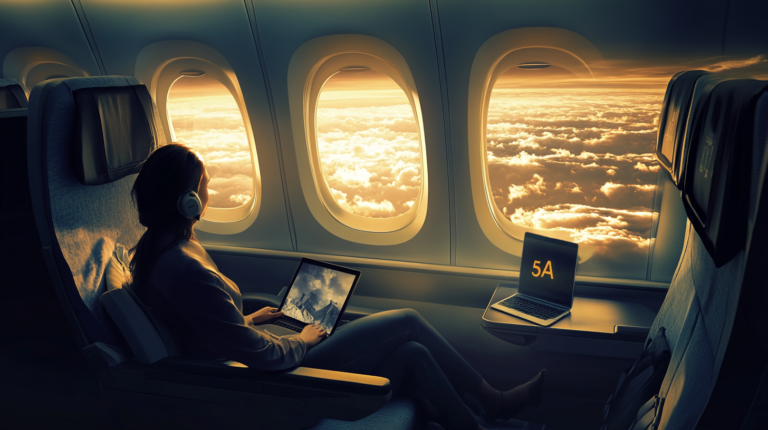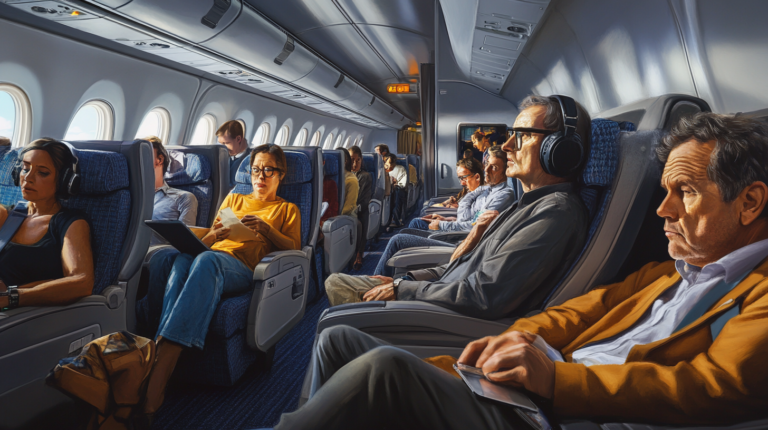Sleep Hacks for Long Flights: How to Rest Like a Pro
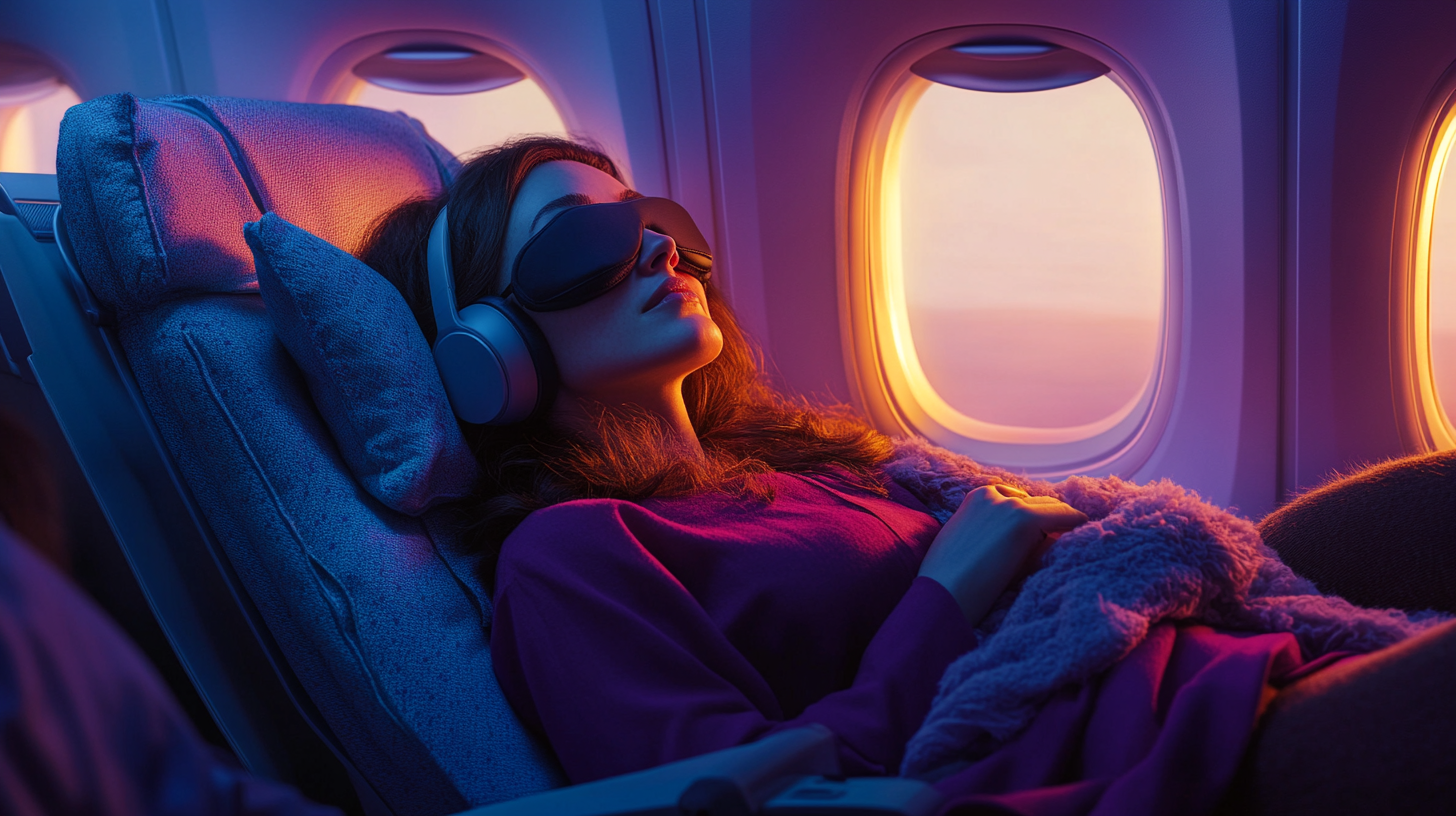
Long-haul flights, spanning continents and time zones, can be both an exciting start to an adventure and a daunting challenge, especially when it comes to catching quality sleep thousands of feet above the ground. The prospect of spending hours in the confines of an airplane seat can be unsettling, and without proper rest, jet lag can take a significant toll on your well-being upon arrival. However, a restful journey doesn’t have to be out of reach. By implementing effective strategies, you can minimize discomfort, enhance your in-flight experience, and arrive at your destination feeling refreshed. This comprehensive guide delves into proven techniques to help you rest like a pro on your next flight, transforming your travel into a rejuvenating experience.
Choosing the Right Seat
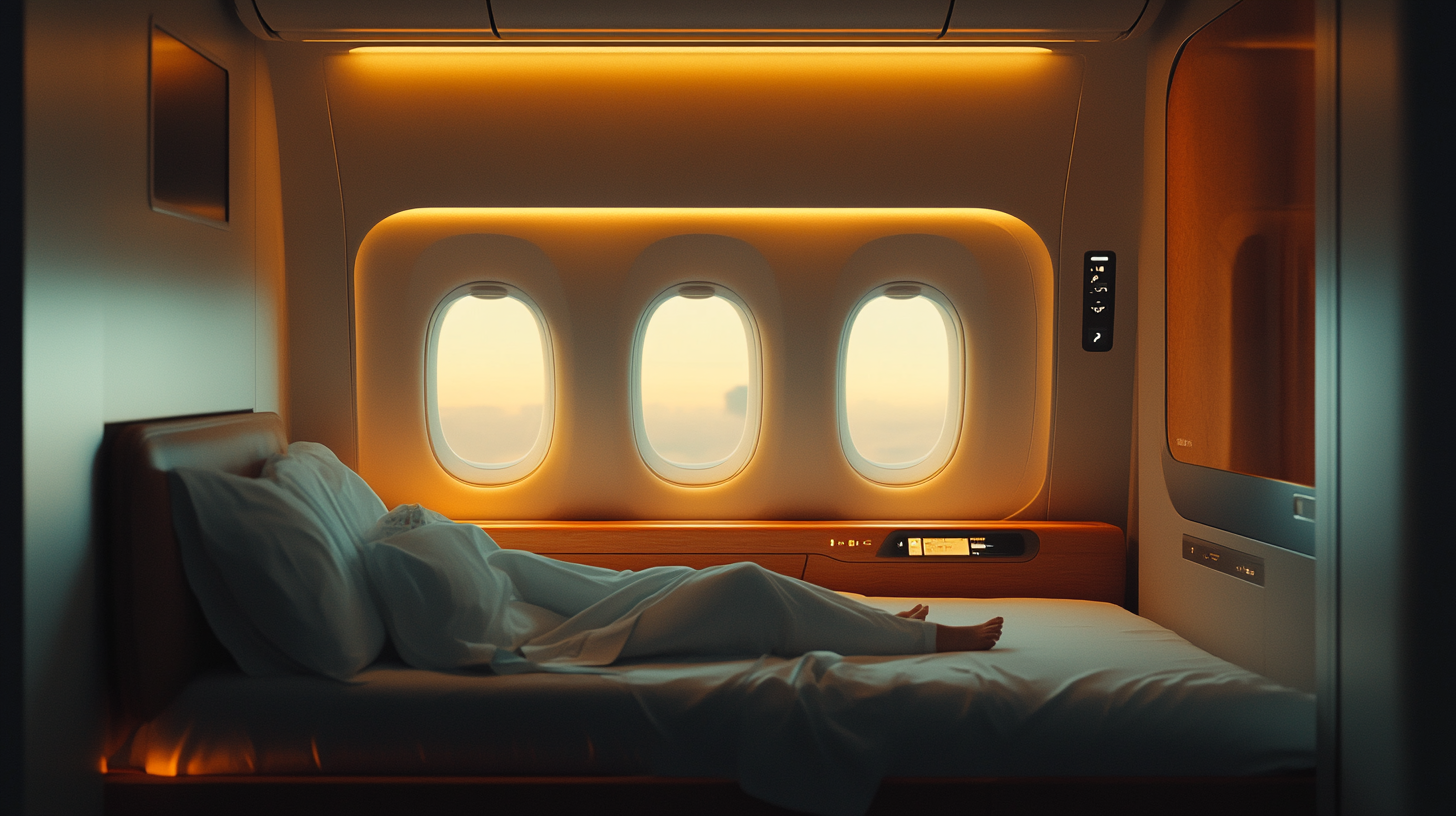
Your seat selection plays a pivotal role in achieving in-flight sleep. The difference between a restful slumber and a sleepless ordeal can hinge on where you sit. By planning ahead and choosing wisely, you can create a more comfortable and sleep-conducive environment.
Opt for a Window Seat
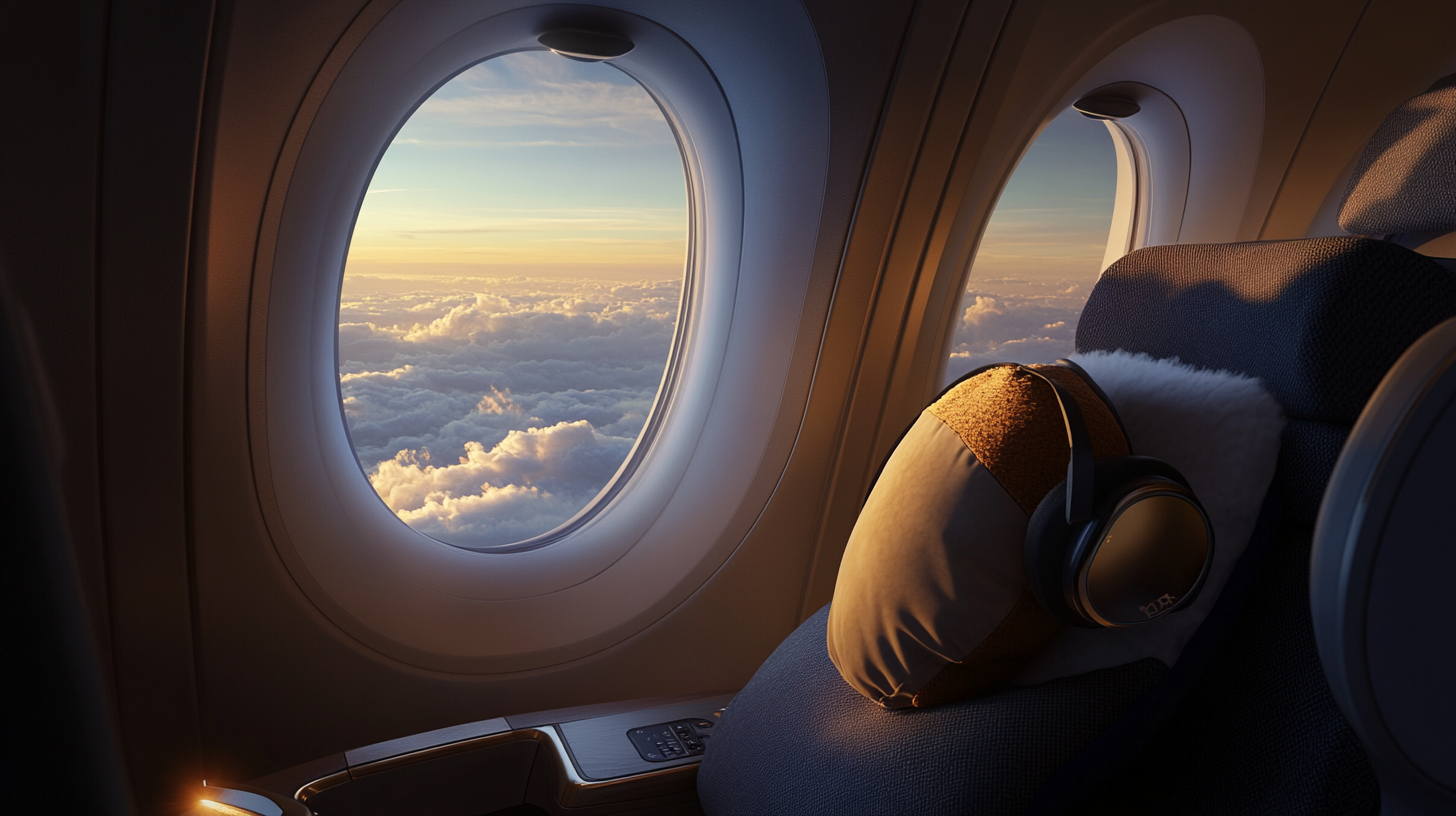
Selecting a window seat offers several advantages that can significantly improve your ability to sleep.
- Control Over the Environment: Having command over the window shade allows you to adjust the light levels to your preference, reducing glare and creating a darker space for rest.
- Additional Support: The cabin wall provides a sturdy surface to lean against, which can be especially helpful in finding a comfortable sleeping position. Some travelers enhance this support by using innovative travel pillows designed for window seats .
- Reduced Disturbances: With a window seat, you won’t be disturbed by fellow passengers needing to access the aisle, allowing for uninterrupted sleep.
Avoid High-Traffic Areas
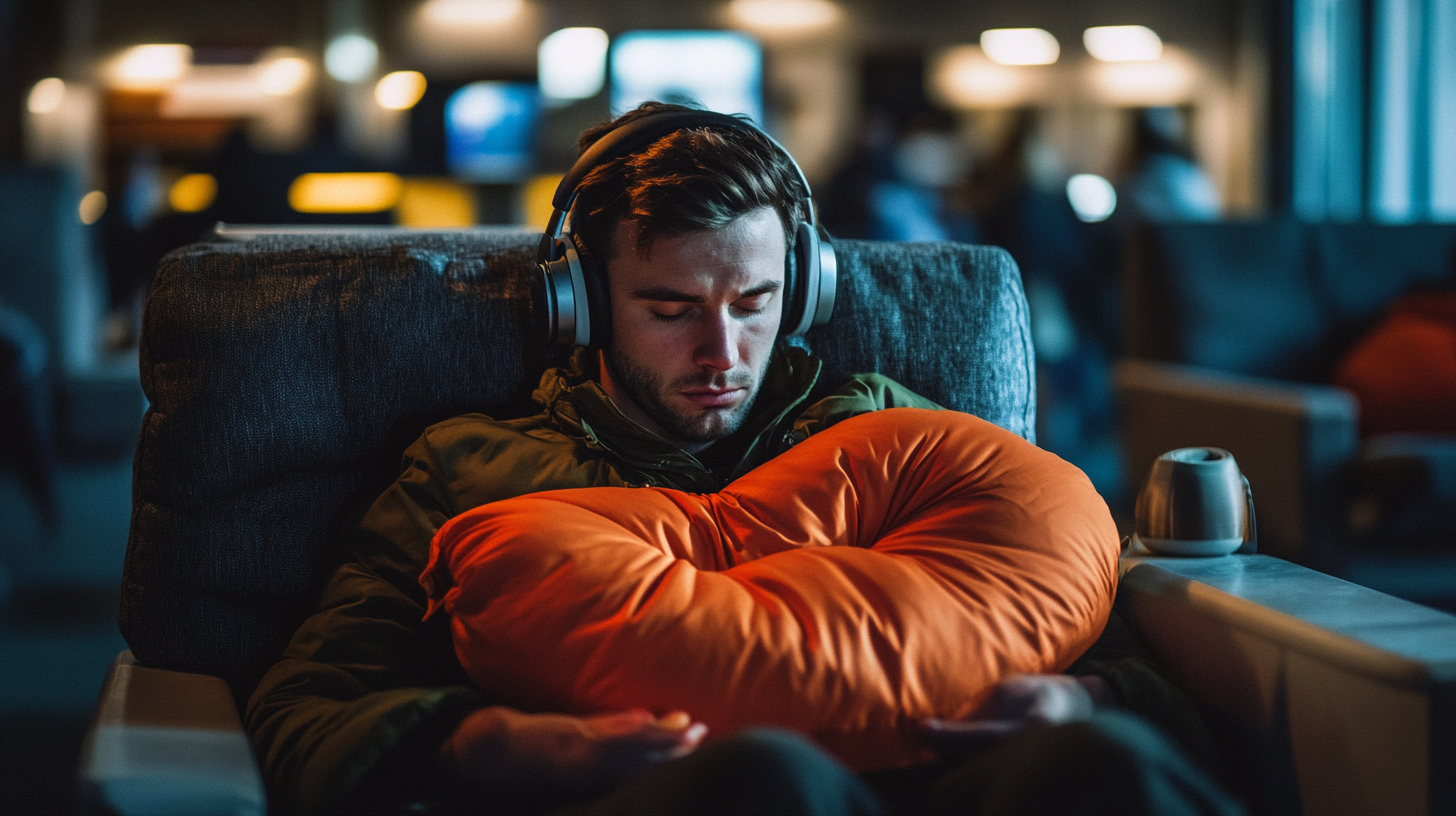
Seats near restrooms and galleys are often subject to increased noise and activity, which can disrupt sleep.
- Noise Reduction: By choosing a seat away from these busy zones, you minimize exposure to chatter, flushing toilets, and clanging dishes.
- Use Seat Mapping Tools: Utilize resources like SeatGuru or consult airline-specific seat selection guides to identify seats known for their tranquility.
- Avoid Limited Recline Seats: Stay clear of seats that do not recline or those located near bulkheads or exit rows where seat functions may be restricted.
Consider Extra Legroom Seats
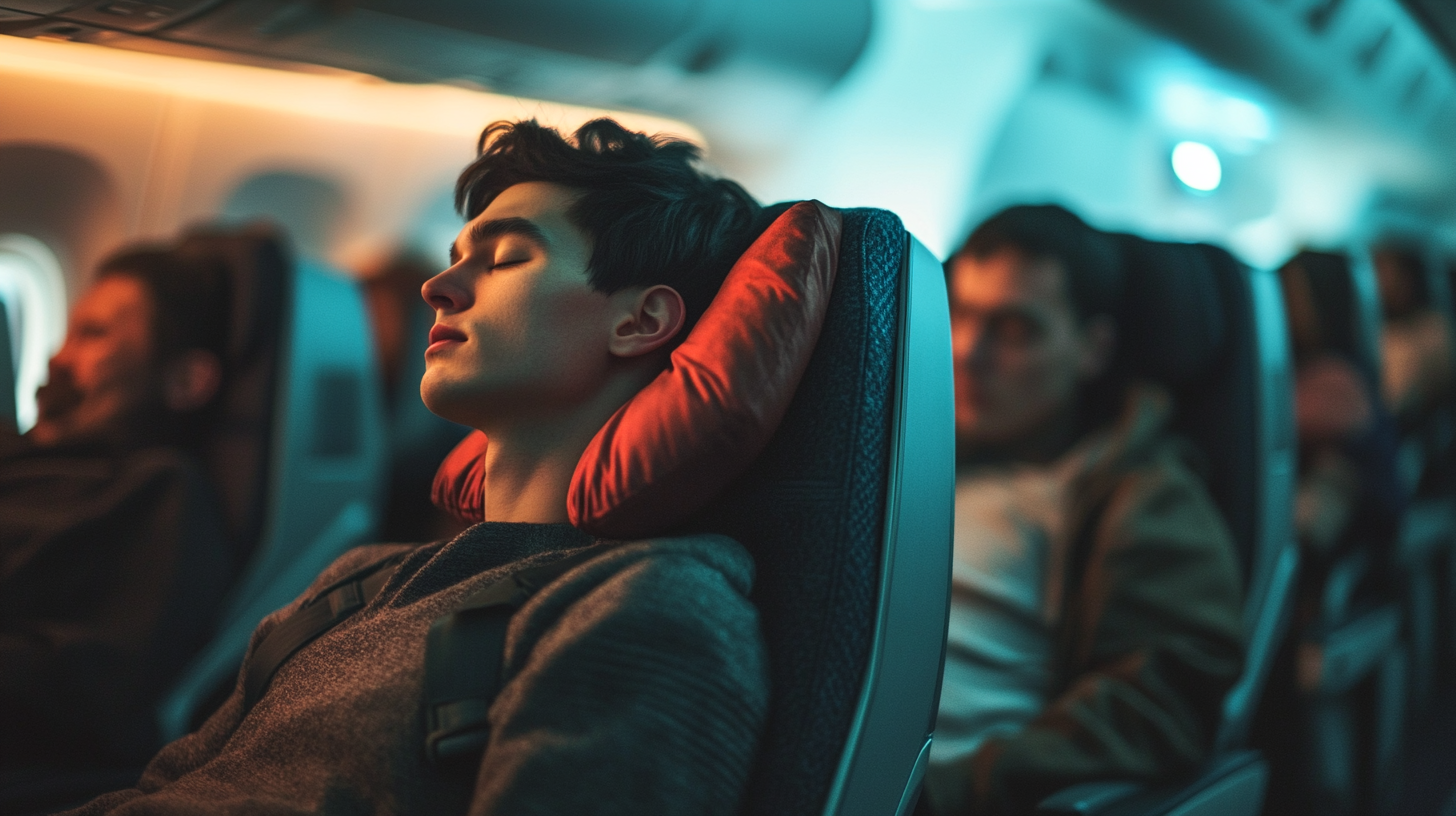
For those who can, upgrading to seats with more space can significantly enhance comfort and sleep quality.
- Exit Rows and Bulkhead Seats: These seats often offer additional legroom, providing space to stretch out and find a more comfortable sleeping position.
- Premium Economy Options: Many airlines offer economy plus or premium economy seats with extra legroom and recline. Exploring comprehensive airline seat comparisons can help you find the best option for your needs.
- Business or First-Class Upgrades: If budget allows, lie-flat seats in higher classes can transform your in-flight sleep experience, offering pillows, blankets, and increased privacy.
Pre-Flight Preparation
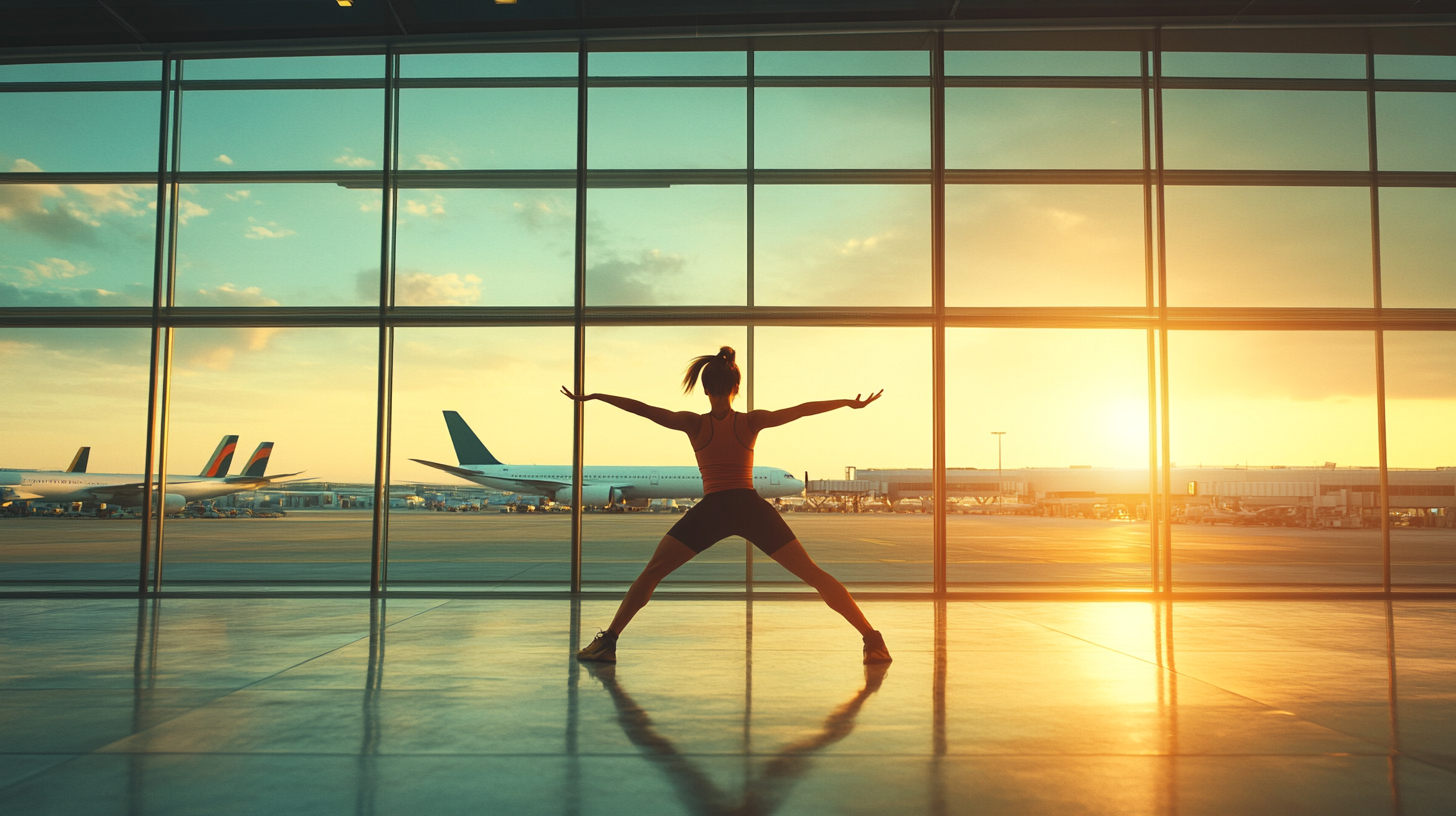
Setting the stage before boarding can significantly impact your ability to sleep. By preparing your body and mind for rest, you increase the likelihood of sleeping soundly during the flight.
Adjust Your Sleep Schedule
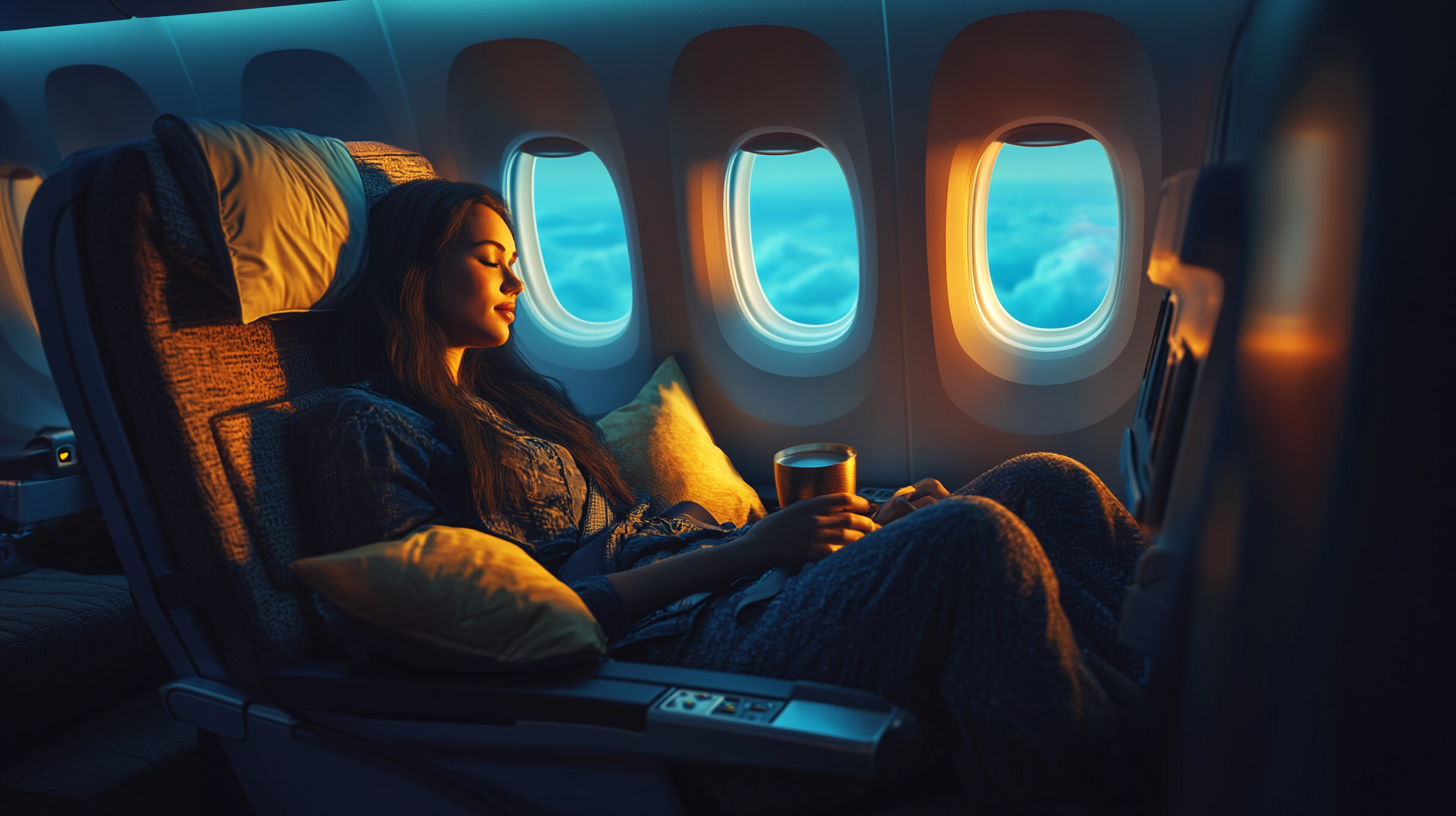
Acclimating to your destination’s time zone ahead of your trip can reduce jet lag and make in-flight sleep more effective.
- Gradual Time Adjustment: In the days leading up to your flight, shift your bedtime and wake-up time by one to two hours towards your destination’s time zone.
- Regulate Circadian Rhythm: This proactive approach helps your body’s internal clock adjust, making it easier to sleep on the plane when it’s nighttime at your destination.
- For more guidance, consider strategies for time zone acclimation .
Exercise Before Travel
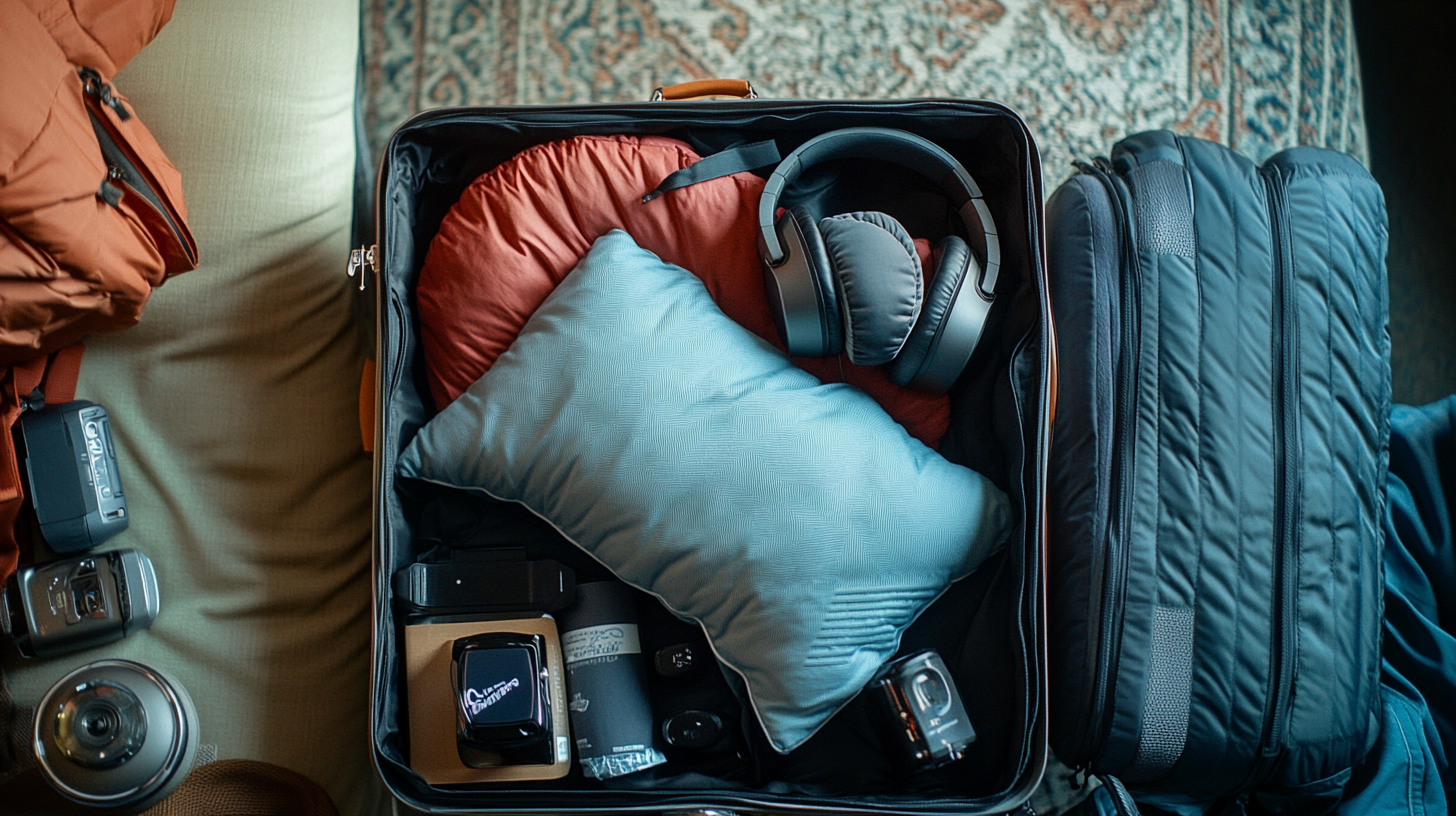
Engaging in physical activity can make it easier to fall asleep during your flight.
- Light Workouts: Activities like walking, yoga, or light cardio can help tire your body, promoting sleepiness when you settle in on the plane.
- Avoid Overexertion: Intense workouts might lead to increased endorphins and energy levels, counteracting your goal of restful sleep.
- Plan Ahead: Schedule your exercise session several hours before your flight to allow your body to wind down.
Avoid Stimulants and Heavy Meals
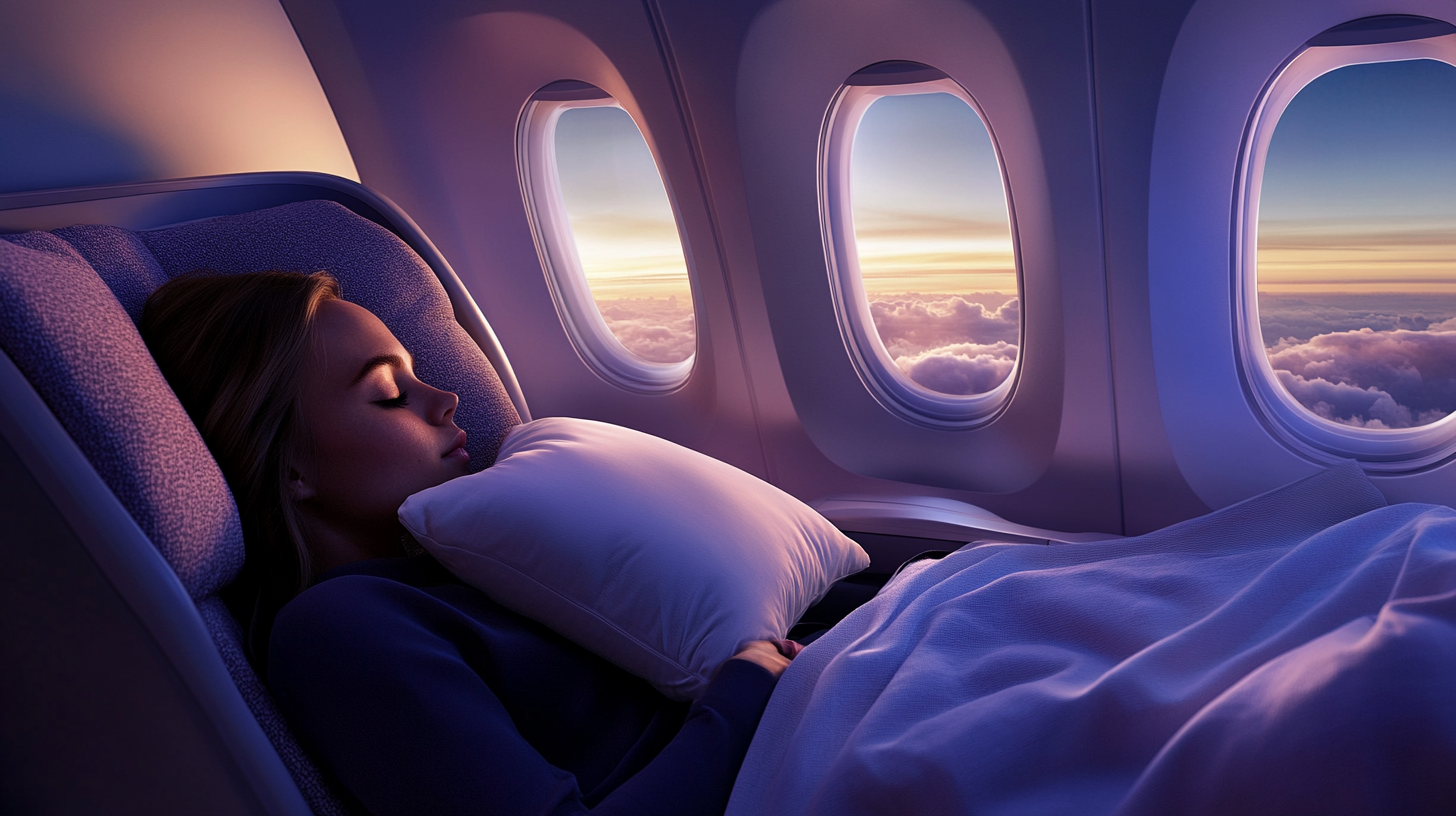
Your dietary choices before and during the flight have a direct impact on sleep quality.
- Limit Caffeine and Alcohol: Both can interfere with your ability to fall asleep and stay asleep. Opt for decaffeinated beverages and avoid alcoholic drinks, which may disrupt sleep patterns.
- Choose Light Meals: Heavy, rich foods can cause discomfort and indigestion. Selecting lighter, balanced options aids digestion and promotes comfort.
- Stay Hydrated: Dehydration can lead to fatigue and discomfort. Sipping water regularly helps maintain hydration levels.
Packing the Essentials

Bringing along the right accessories can transform your in-flight environment into a personal oasis of comfort.
Travel Pillows and Supports
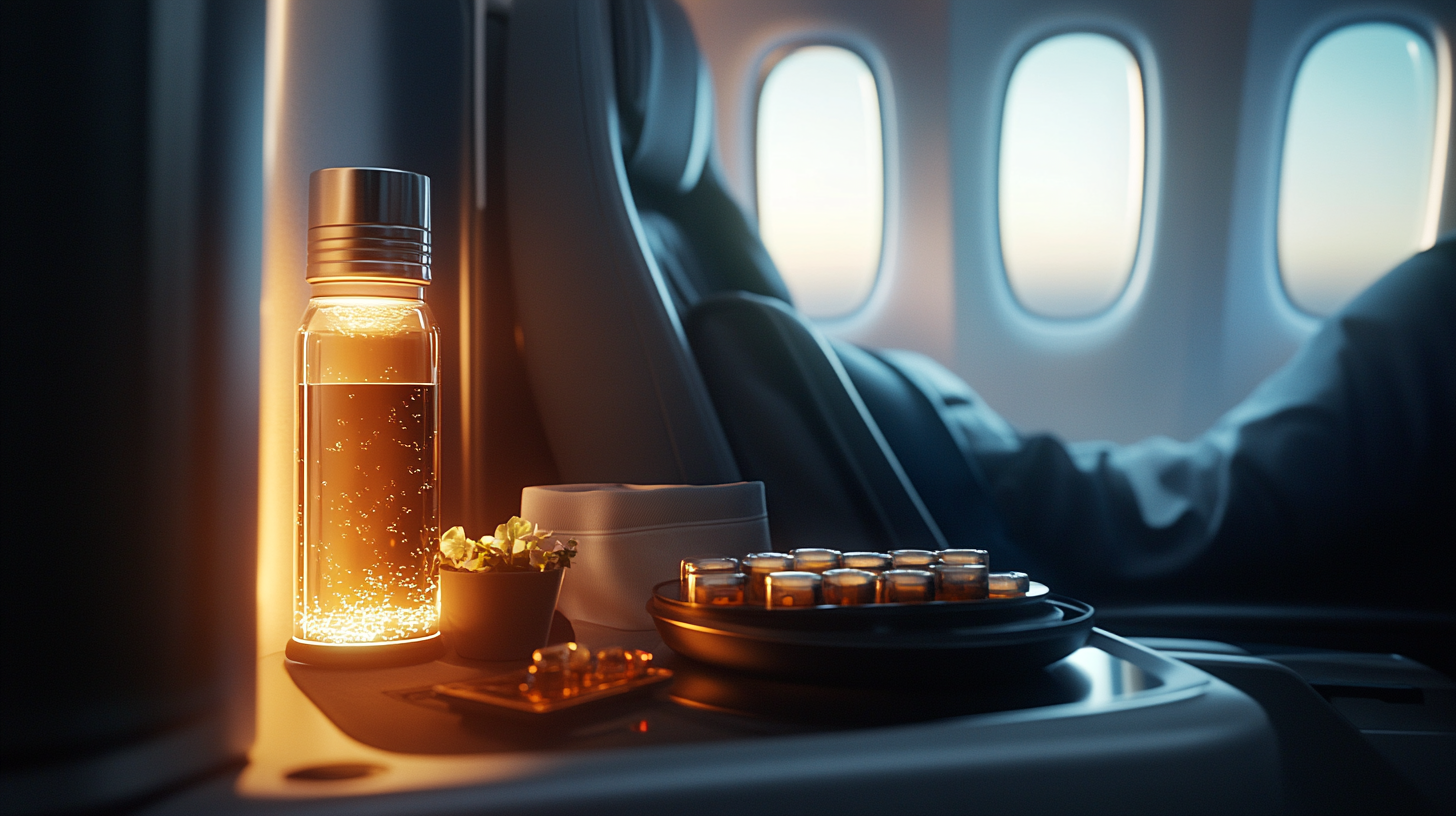
Investing in quality travel pillows and supports can make a substantial difference in comfort.
- Neck Support: Traditional U-shaped pillows are popular, but exploring options like the Trtl Travel Pillow or ergonomic travel neck supports can provide better alignment and support.
- Lumbar Support: An inflatable lumbar pillow or a rolled-up sweater can support your lower back, promoting better posture and reducing strain.
- Customized Comfort: Some travelers prefer innovative products like footrests or leg hammocks to elevate their legs and improve circulation.
Eye Masks and Earplugs
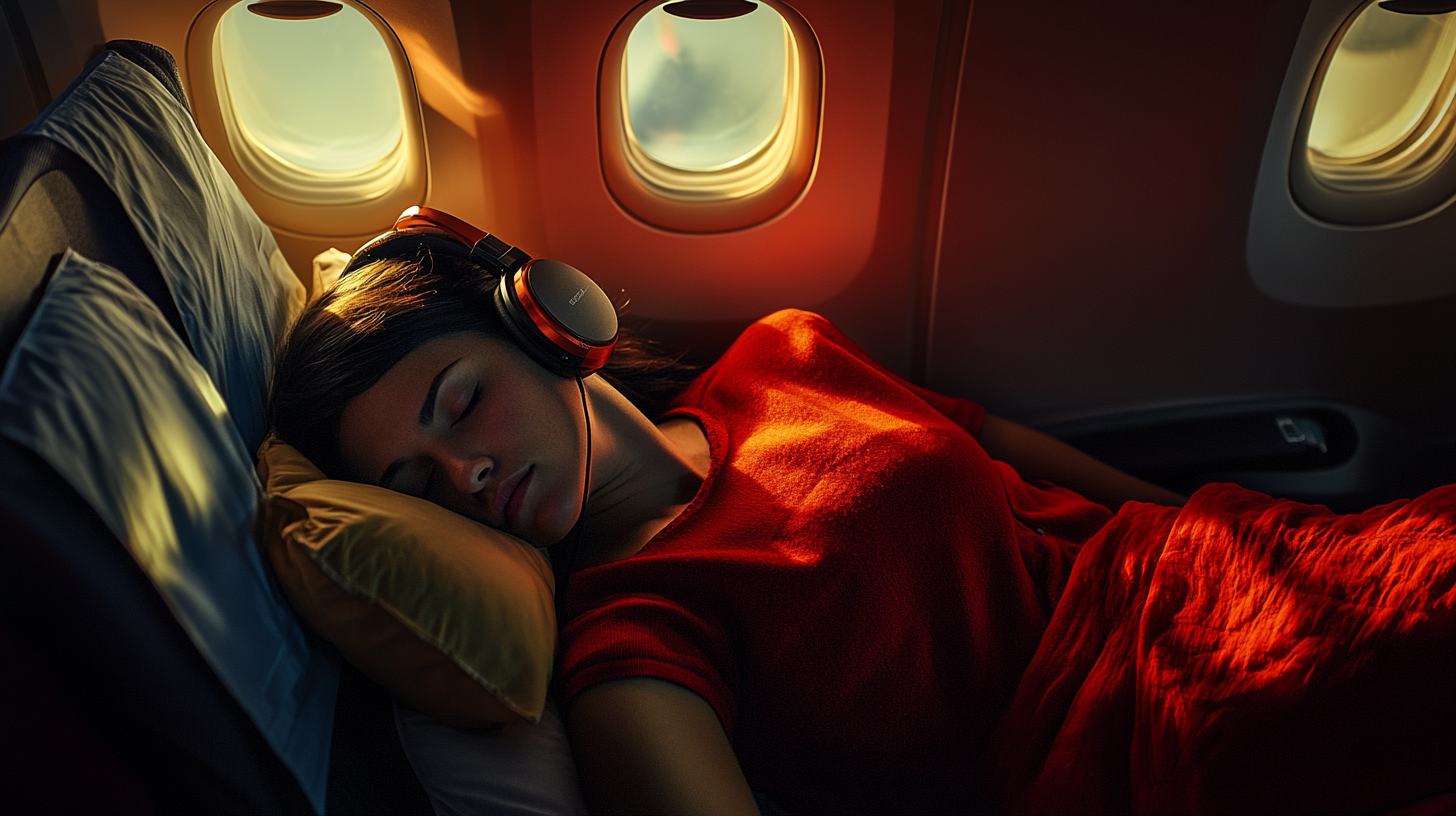
Blocking out sensory distractions is key to falling asleep faster and staying asleep longer.
- Quality Eye Masks: An eye mask, such as the Glimpse Sleep Mask, can create a dark environment by sealing out ambient light. Consider masks with contoured designs to avoid pressure on your eyes.
- Noise Reduction: Earplugs or noise-canceling headphones can significantly reduce engine noise and cabin sounds. Listening to white noise or calming music through noise-canceling headphones designed for travel can further enhance relaxation.
- Comfort Matters: Choose earplugs and masks made of soft, breathable materials to ensure comfort during extended wear.
Comfortable Clothing and Layers
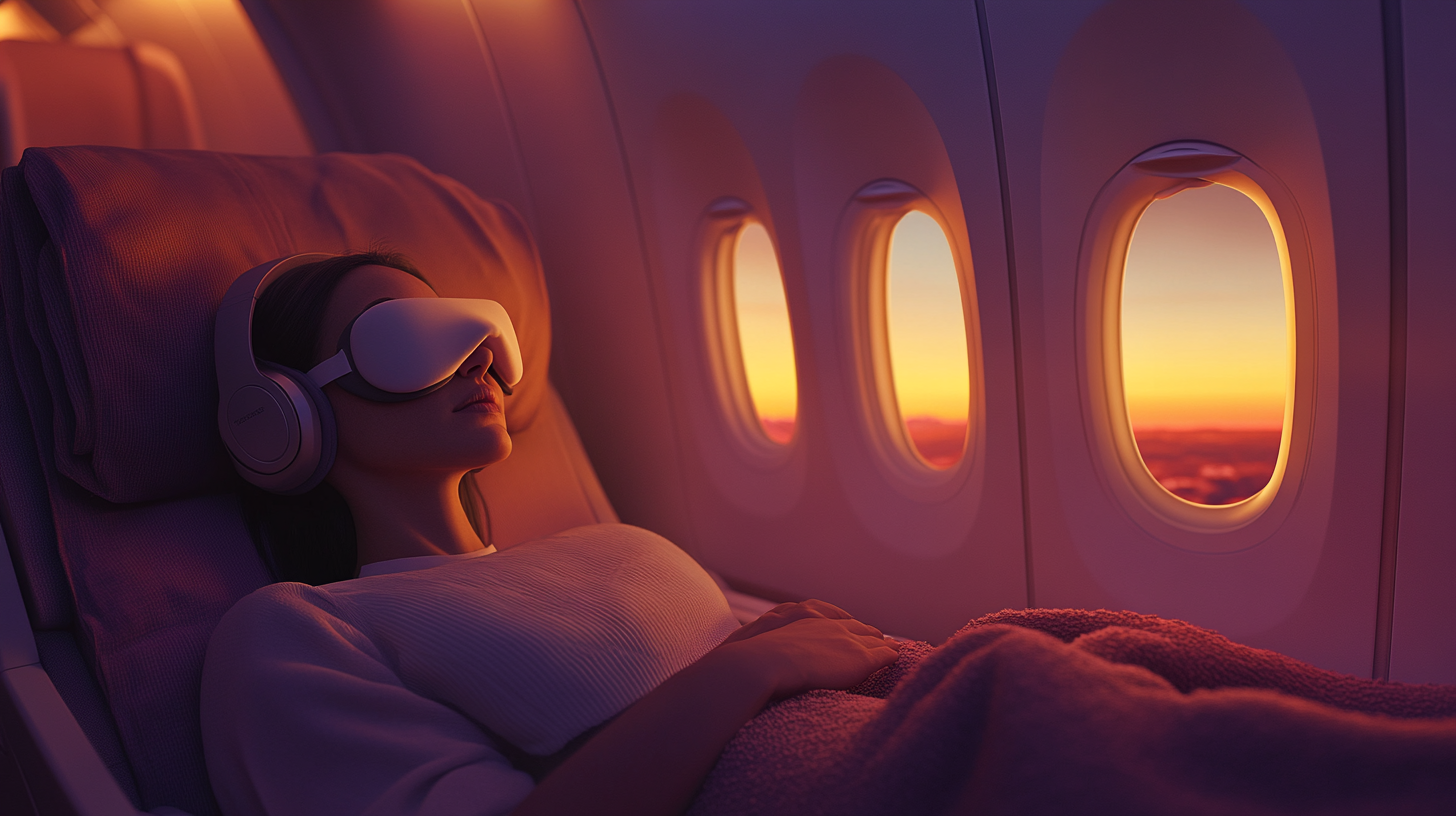
Dressing appropriately can help your body relax and adapt to changing cabin temperatures.
- Loose-Fitting Attire: Wear clothing that allows for free movement and doesn’t constrict. Natural fibers like cotton or bamboo are breathable and comfortable.
- Compression Socks: These can aid circulation and reduce the risk of swelling or deep vein thrombosis. For options, explore best compression socks for long flights .
- Layering Strategy: Airplane cabins can fluctuate in temperature. Bringing a light jacket or shawl lets you adjust your warmth level as needed.
Hydration Accessories
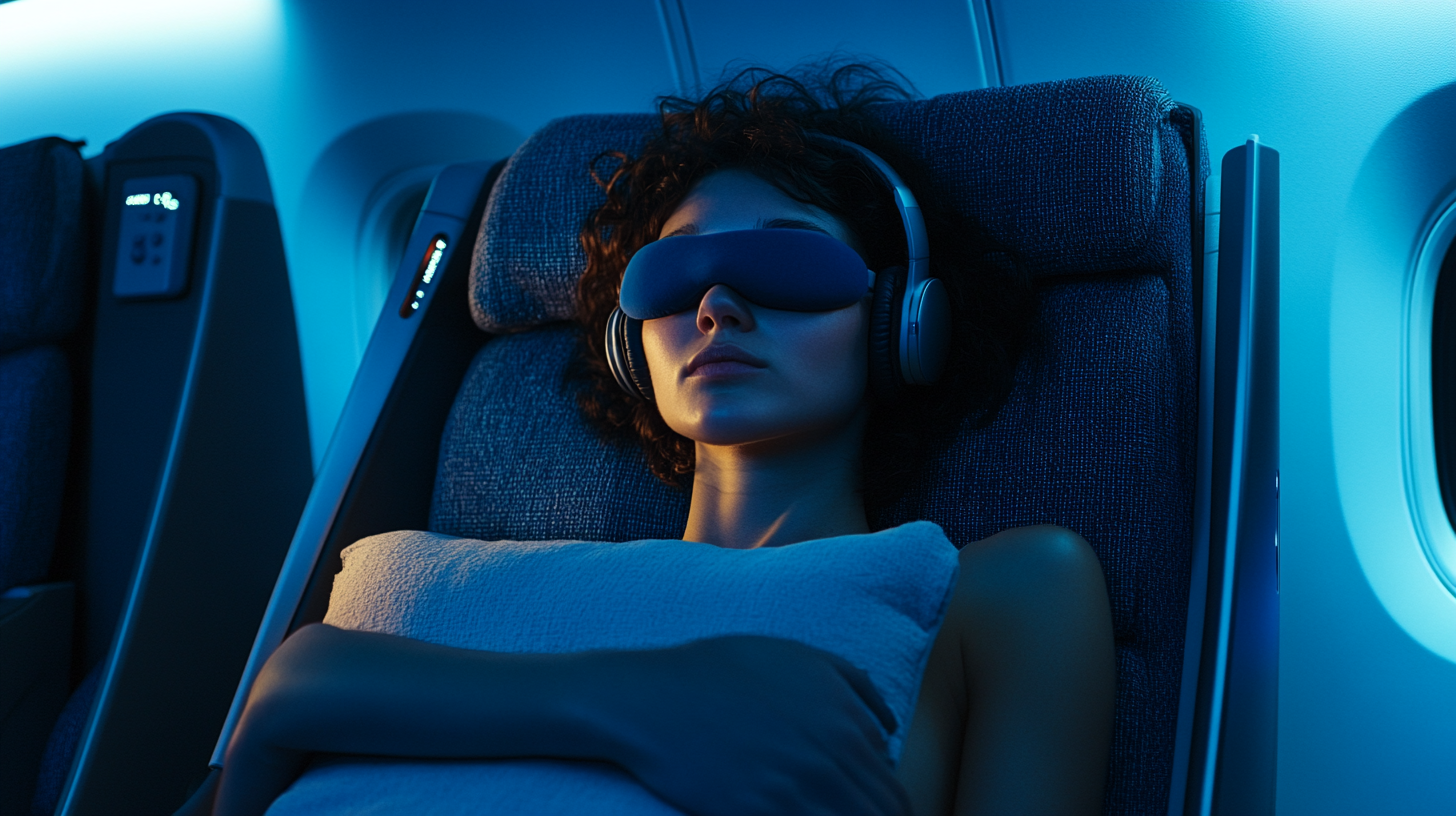
Counteracting the dry cabin air helps maintain comfort and health.
- Personal Water Bottle: Bring an empty flask to fill after security. Having water on hand encourages regular hydration without relying on cabin service schedules.
- Moisturizing Products: Lip balm and a small bottle of skin moisturizer can combat dryness. Some travelers also use nasal sprays to keep airways hydrated.
- For further tips, see managing hydration during air travel .
In-Flight Strategies
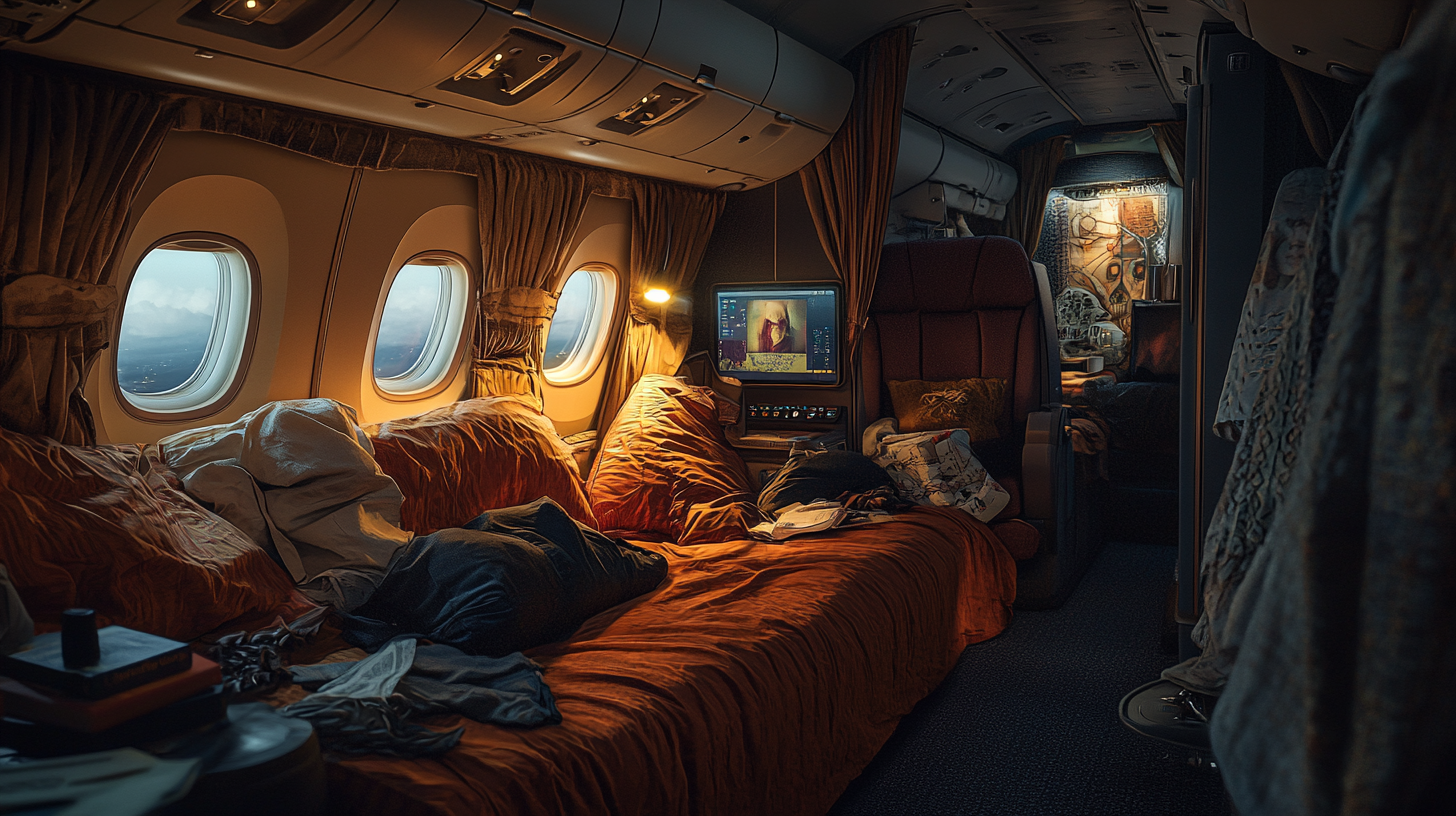
Implementing specific tactics during the flight can greatly enhance sleep quality and overall comfort.
Create a Sleep-Friendly Environment
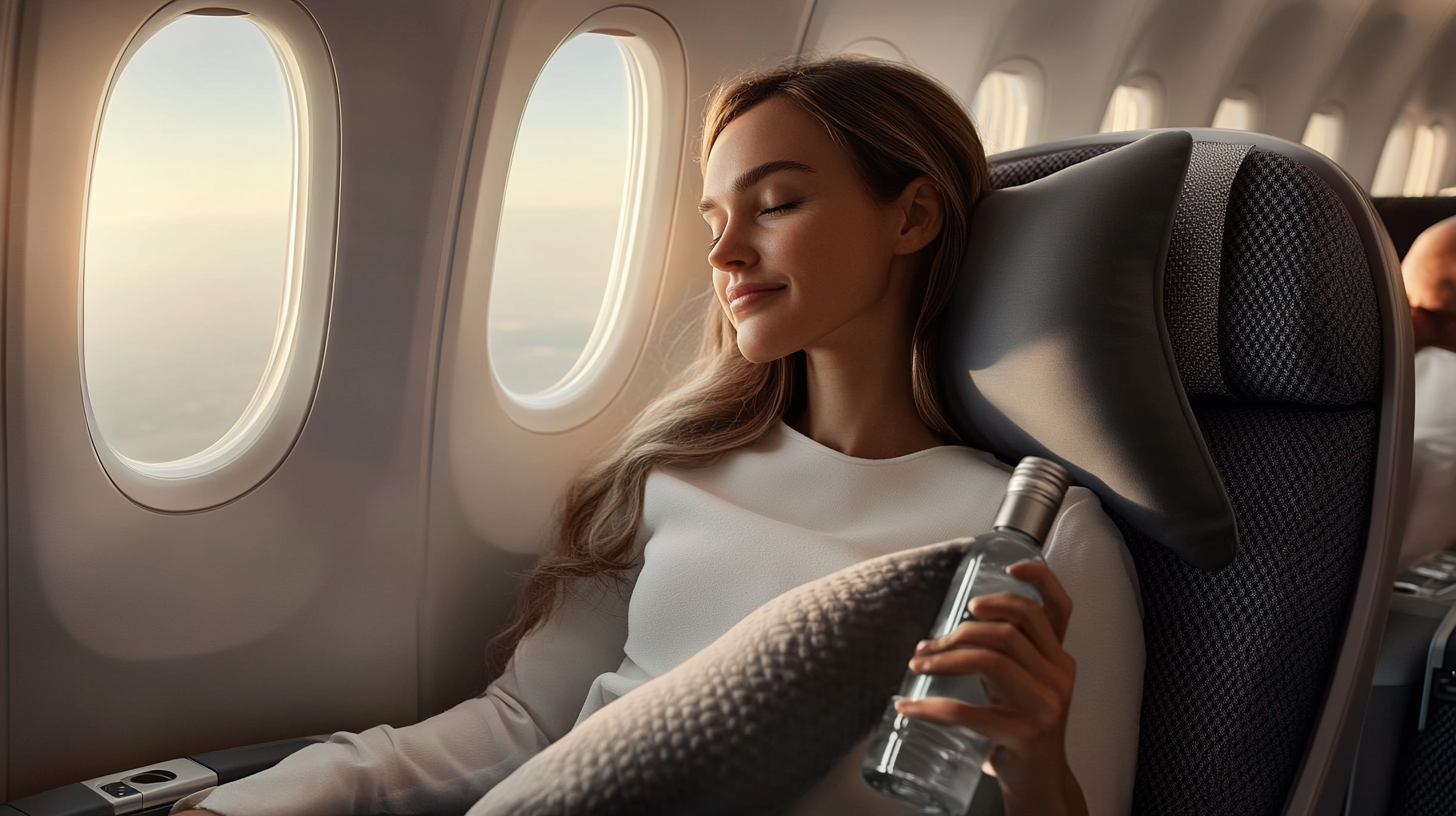
Mimic your usual bedtime routine as much as possible to signal your body that it’s time to sleep.
- Follow Familiar Rituals: Engage in activities you typically do before bed, such as reading, listening to calming music, or practicing relaxation techniques.
- Get Cozy: Use a hoodie or blanket to create a warm and comfortable space. This not only helps you relax but also signals to others that you’re trying to rest.
- Aromatherapy: If permissible, a small amount of calming essential oil like lavender on a scarf or wrist can promote relaxation. Be mindful of those around you to avoid strong scents.
- For more ideas, consider replicating your bedtime routine while traveling .
Relaxation Techniques
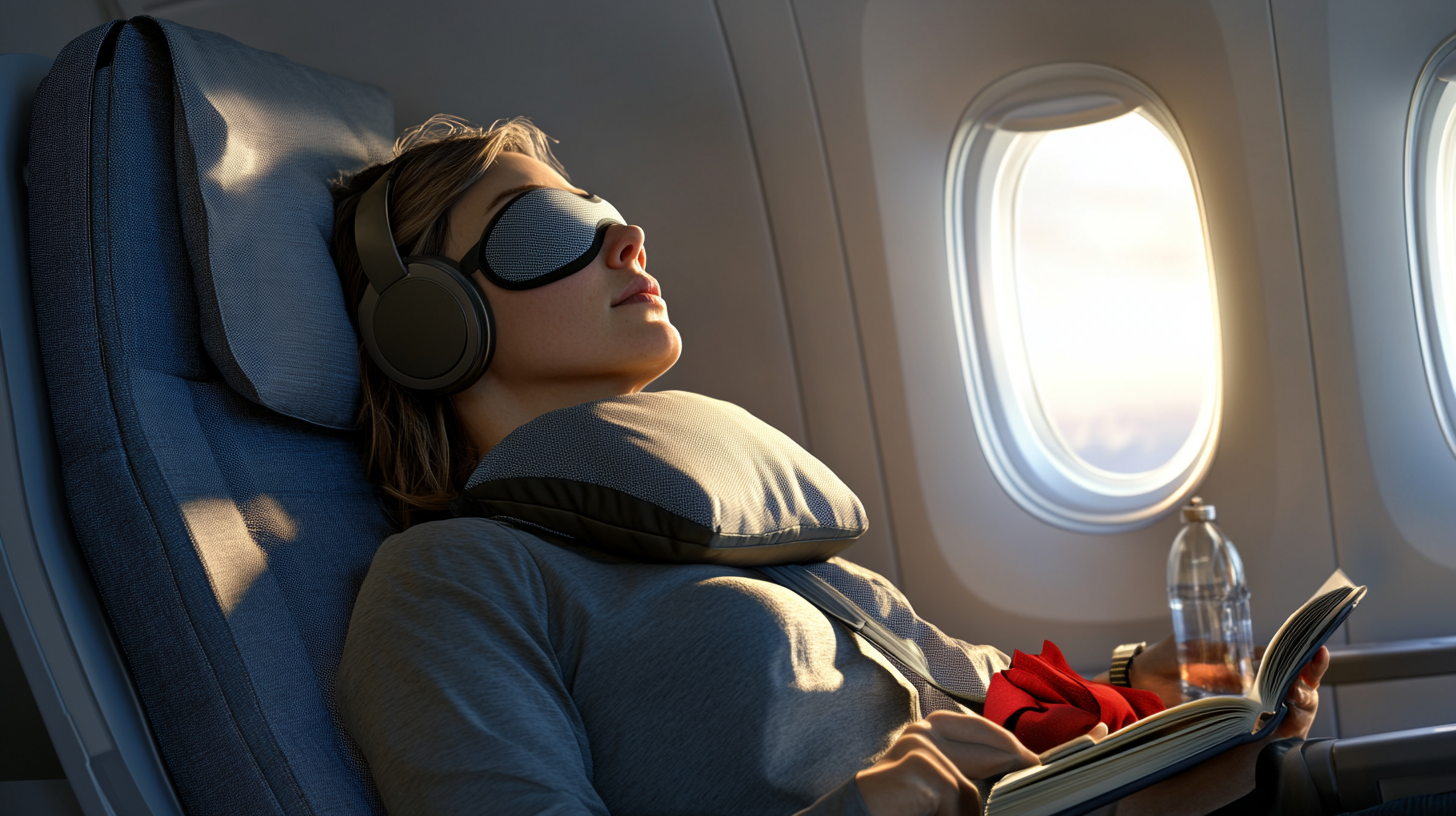
Employ methods to calm your mind and body, making it easier to fall asleep even in an unfamiliar environment.
- Progressive Muscle Relaxation: Tense and relax each muscle group systematically, starting from your toes and working upwards. This can release tension and promote physical relaxation.
- Deep Breathing Exercises: Practice slow, deep breaths to reduce stress and lower your heart rate. Techniques like the 4-7-8 breathing method can be particularly effective.
- The Military Sleep Hack: This method involves relaxing your facial muscles, dropping your shoulders, and focusing on deep breathing, as detailed in techniques for falling asleep quickly .
Avoid Screens Before Sleep
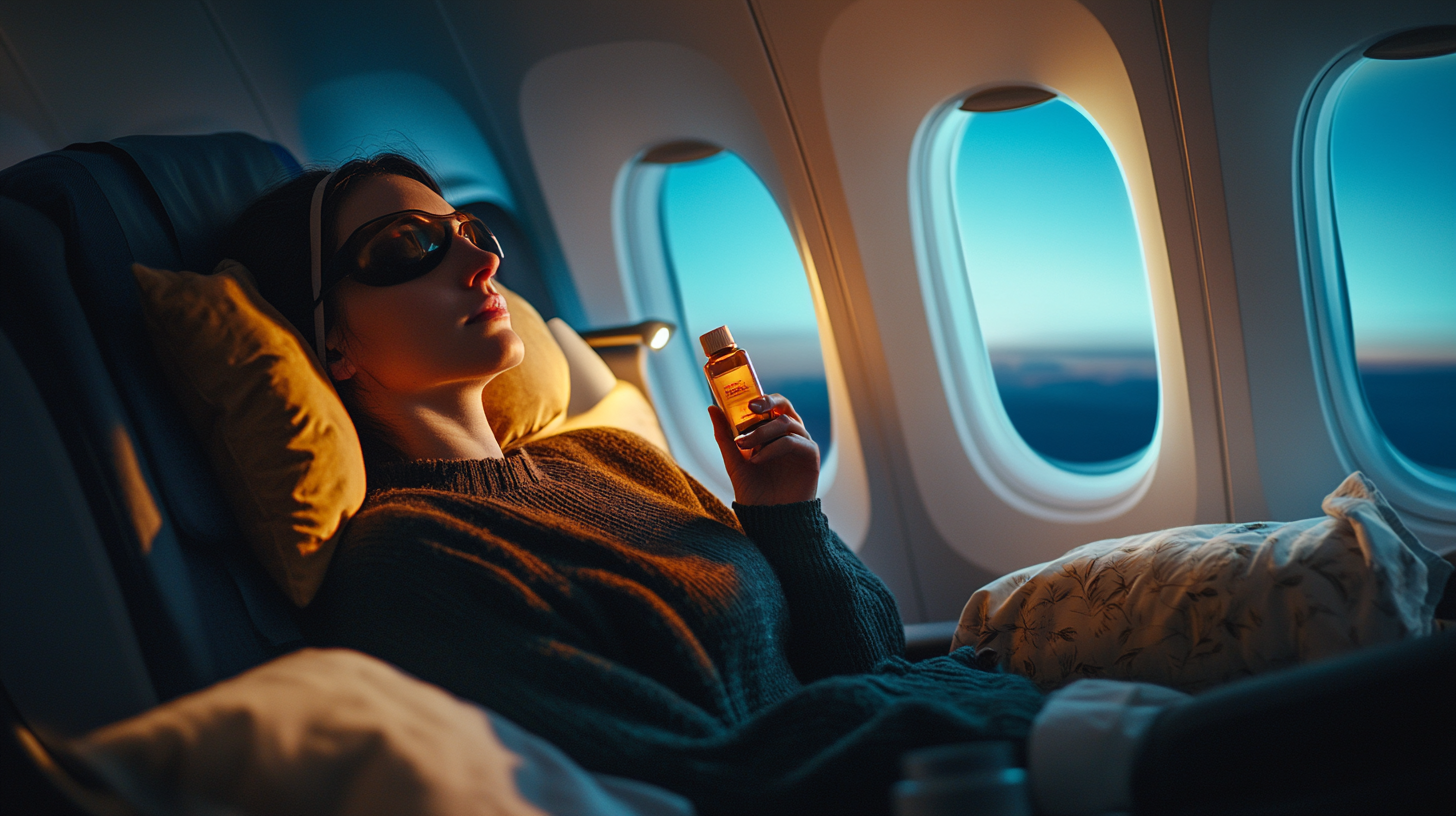
Blue light from electronic devices can interfere with your body’s melatonin production, hindering sleep.
- Limit Device Use: Try to avoid screens at least an hour before you plan to sleep. If necessary, use blue-light-blocking glasses or enable night mode on devices.
- Opt for Non-Screen Activities: Reading a physical book, writing in a journal, or listening to calming audio can help you wind down without the stimulating effects of screens.
- For more information, see impact of blue light on sleep during travel .
Stay Hydrated and Avoid Alcohol
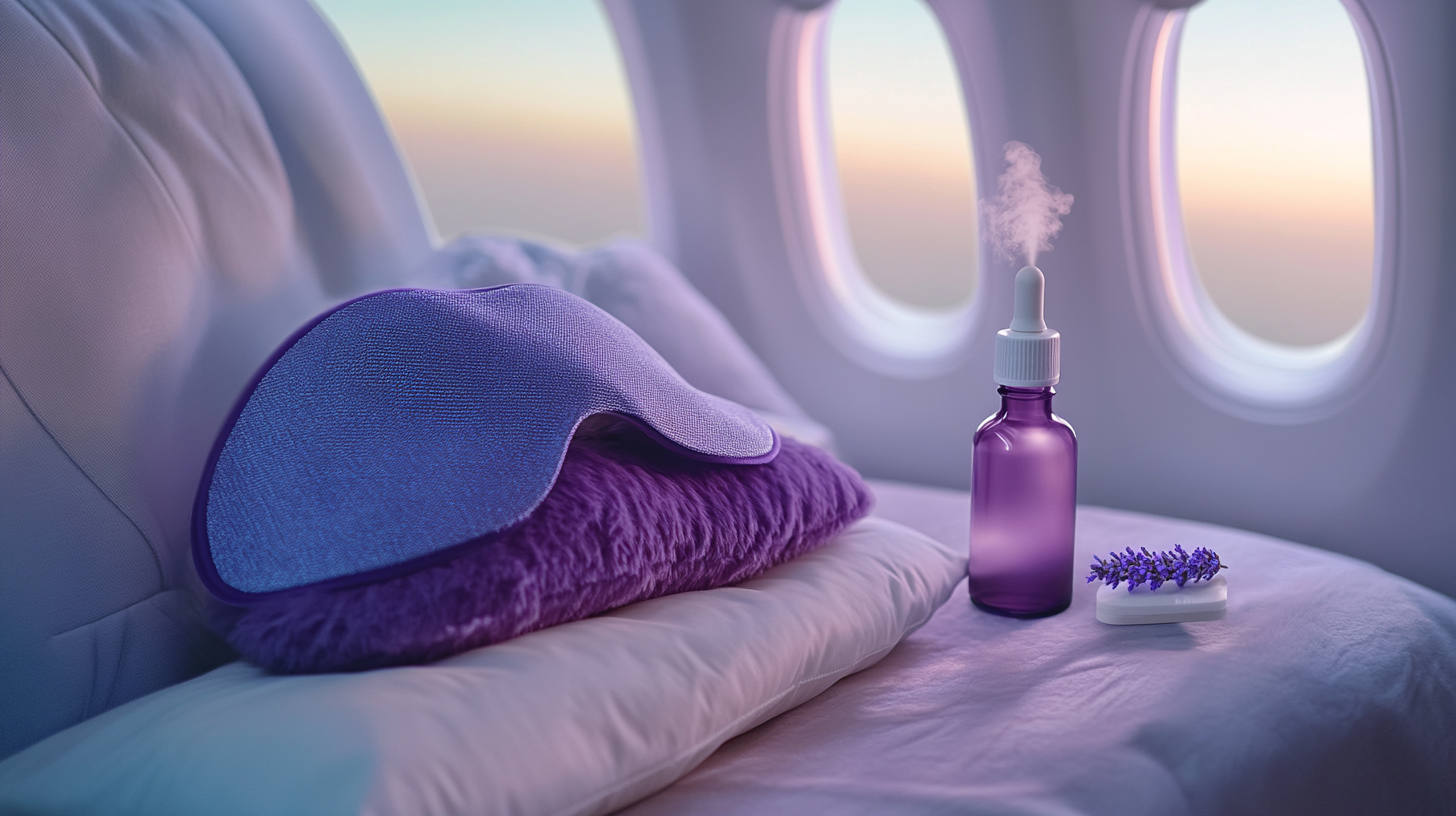
Maintaining hydration while avoiding substances that can disrupt sleep is crucial.
- Choose Hydrating Beverages: Opt for water or herbal teas such as chamomile or peppermint, which can promote relaxation without dehydrating effects.
- Avoid Alcohol and Caffeine: While alcohol might initially make you feel sleepy, it can lead to fragmented sleep and dehydration. Caffeine can keep you awake longer than desired.
- Monitor Intake: Use your personal flask to keep track of how much you’re drinking throughout the flight.
Sleep Aids: Pros and Cons
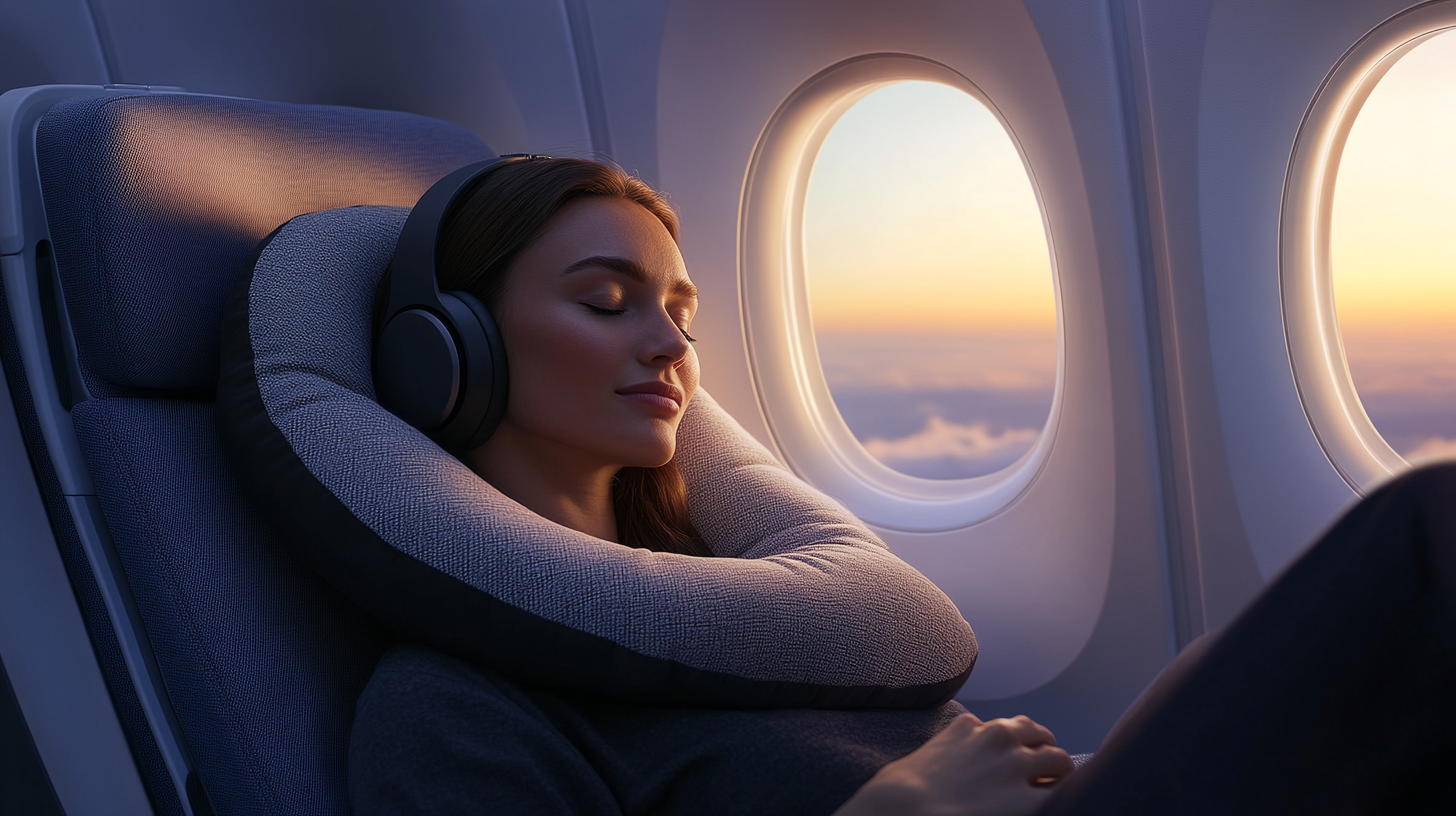
Considering whether to use supplements or medications requires careful thought about the benefits and potential drawbacks.
Melatonin and Herbal Supplements
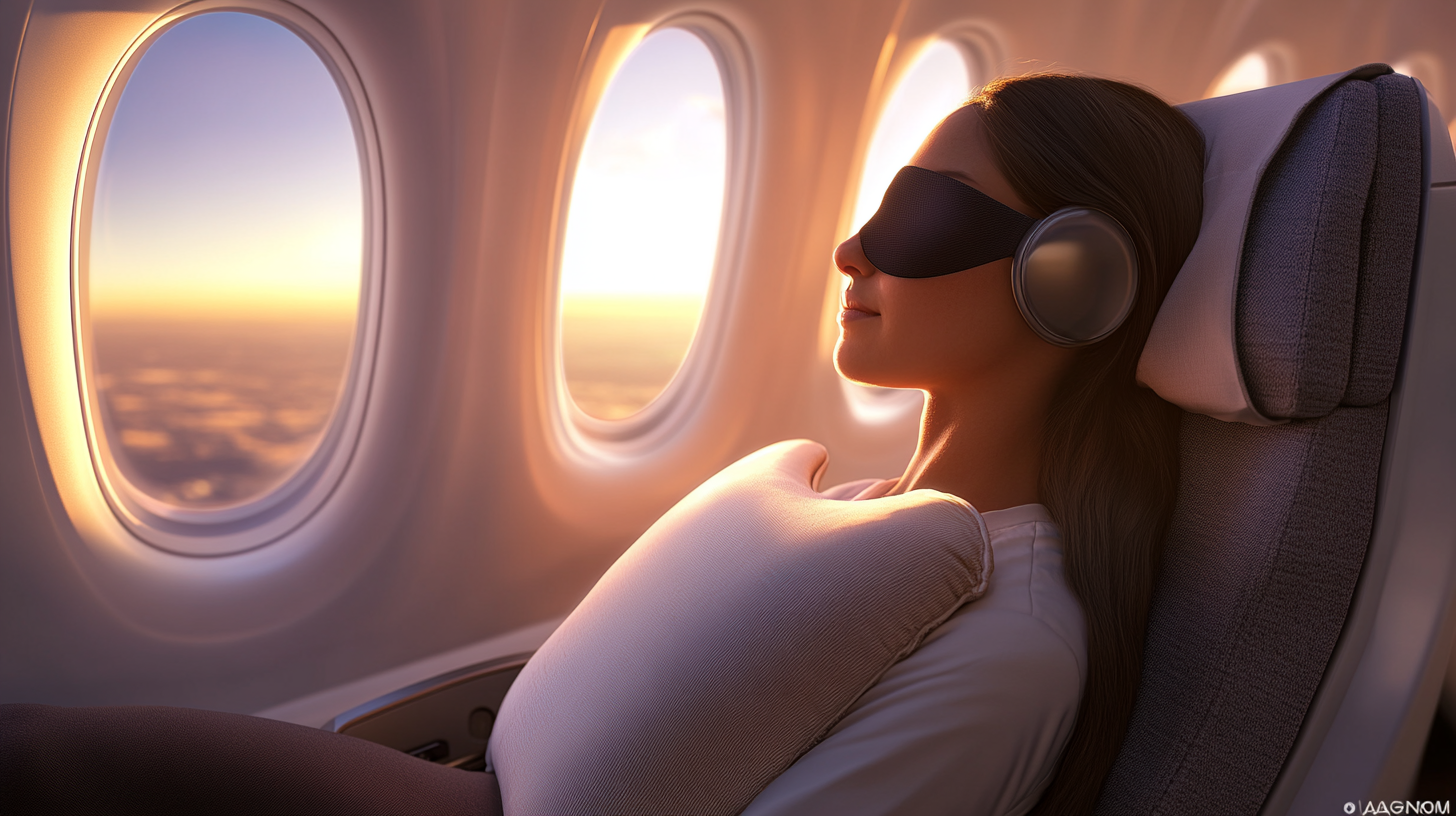
Natural options can aid in regulating sleep without the side effects associated with some medications.
- Melatonin Supplements: As a hormone that regulates sleep-wake cycles, melatonin can help adjust your internal clock. Consult guidelines for melatonin use during travel and discuss with a healthcare provider before use.
- Herbal Teas and Remedies: Teas infused with lavender, chamomile, or valerian root can promote relaxation and are generally safe for most people.
- Considerations: Even natural supplements can interact with medications or have contraindications, so professional guidance is advisable.
Over-the-Counter Medications
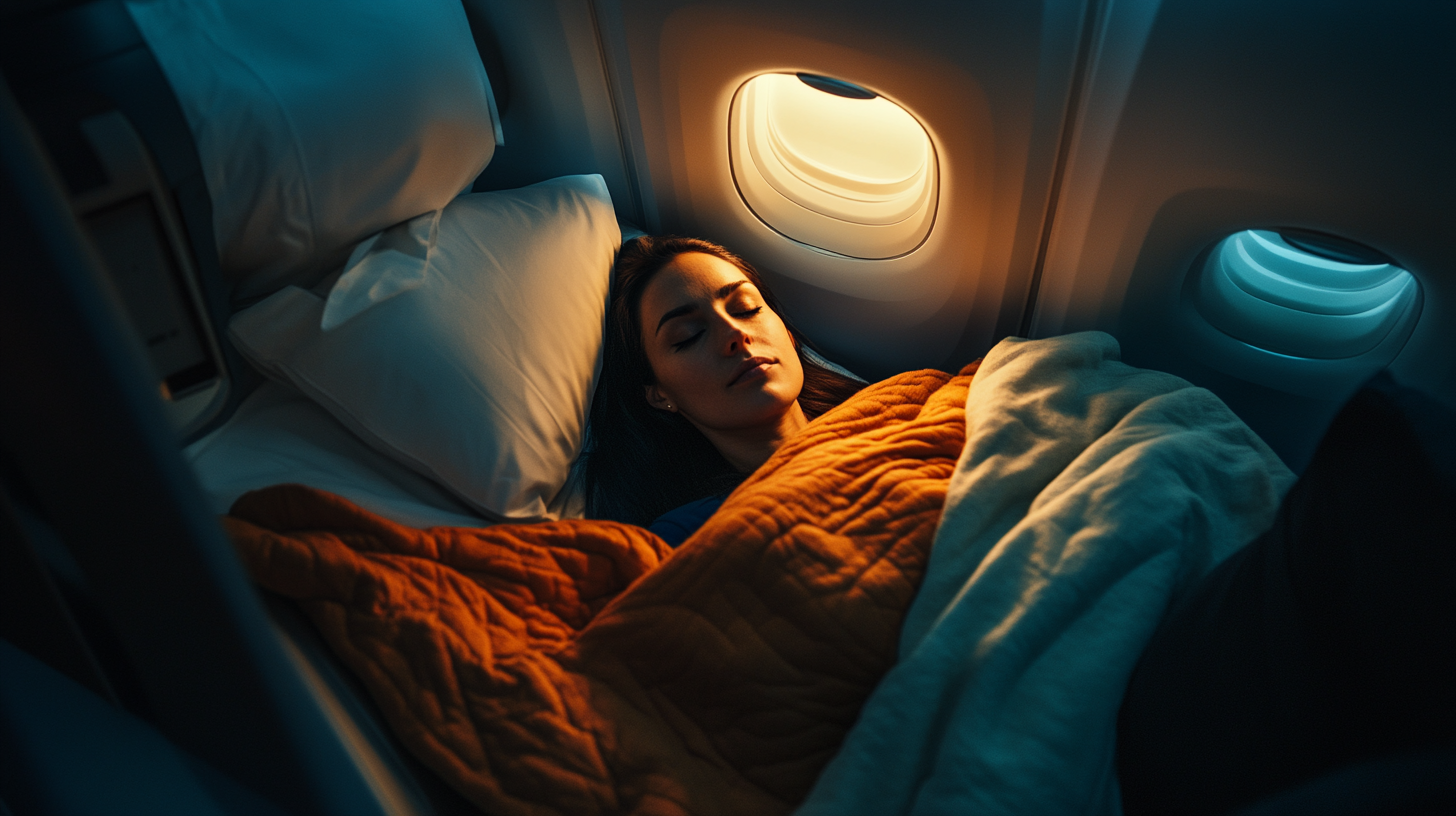
Use caution when considering sleep-inducing medications, as they can have side effects or lead to dependency.
- Antihistamines: Products containing diphenhydramine (e.g., Benadryl) can cause drowsiness but may also result in grogginess upon awakening and are not intended as sleep aids.
- Prescription Medications: Medications like zolpidem (Ambien) or lorazepam (Ativan) should only be used under medical supervision due to potential side effects and dependency risks.
- Professional Consultation: Always consult with a healthcare professional to determine the safest and most appropriate option for your needs.
Aromatherapy
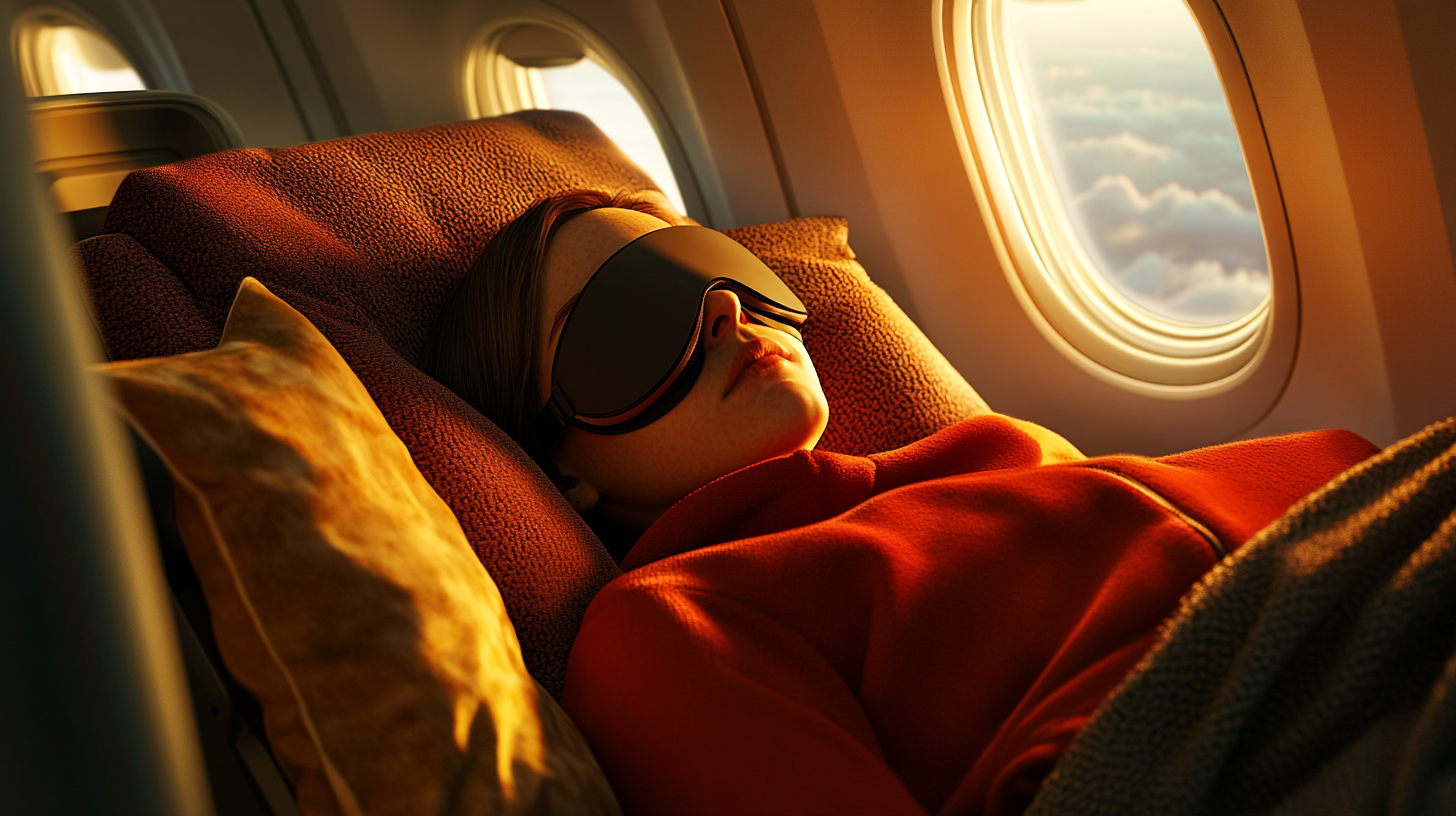
Scents have the power to influence mood and relaxation, potentially aiding sleep.
- Calming Scents: Lavender, chamomile, and sandalwood are popular choices for promoting relaxation. A small, discreet application can be effective.
- Portable Options: Consider aromatherapy bracelets or inhalers that allow for personal use without affecting those around you.
- Be Considerate: Since others may be sensitive to smells, use aromatherapy thoughtfully to ensure a pleasant environment for all passengers.
Managing Distractions and Enhancing Comfort
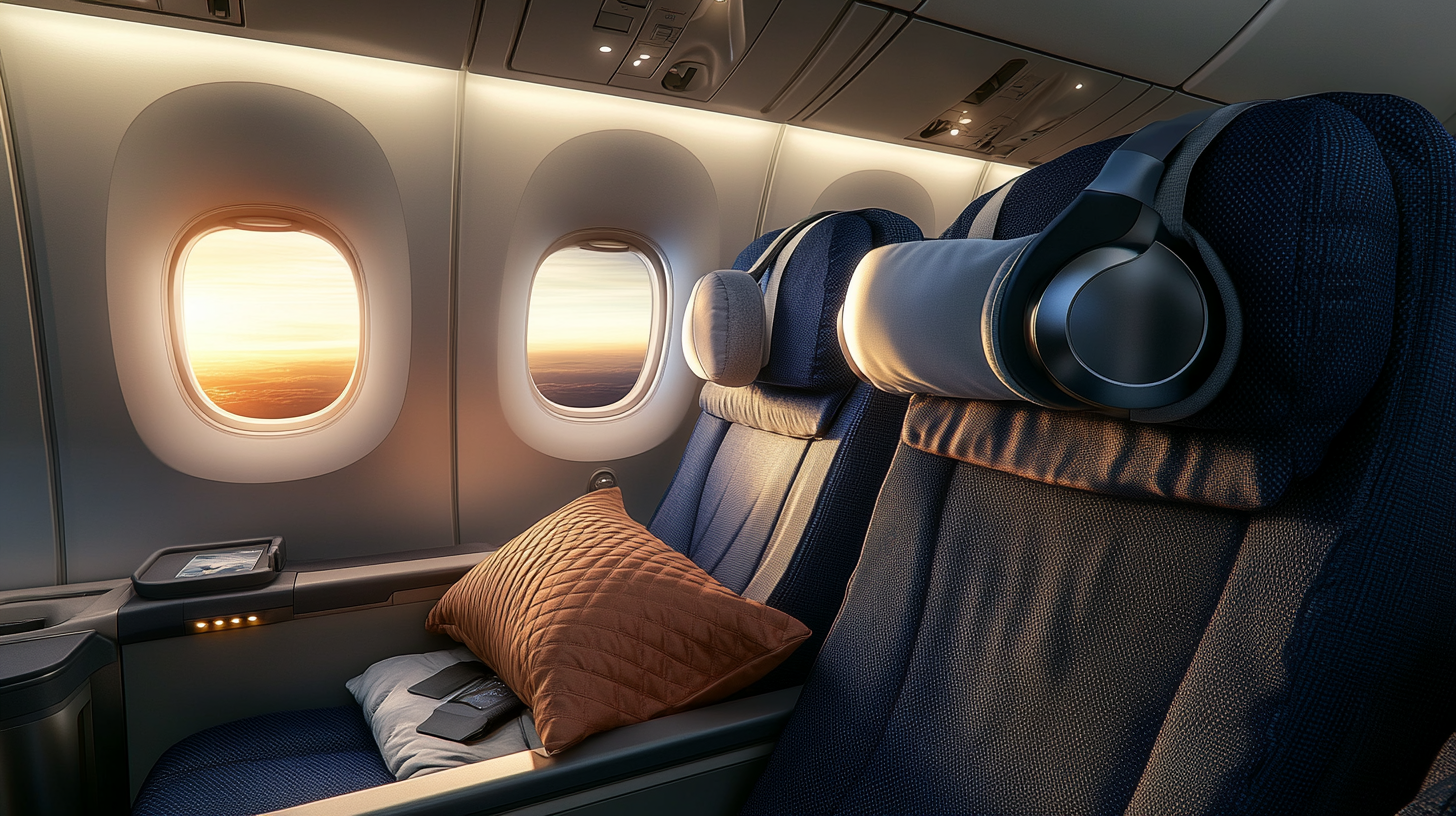
Small adjustments can make a significant difference in your ability to sleep on a plane.
Body Support and Posture
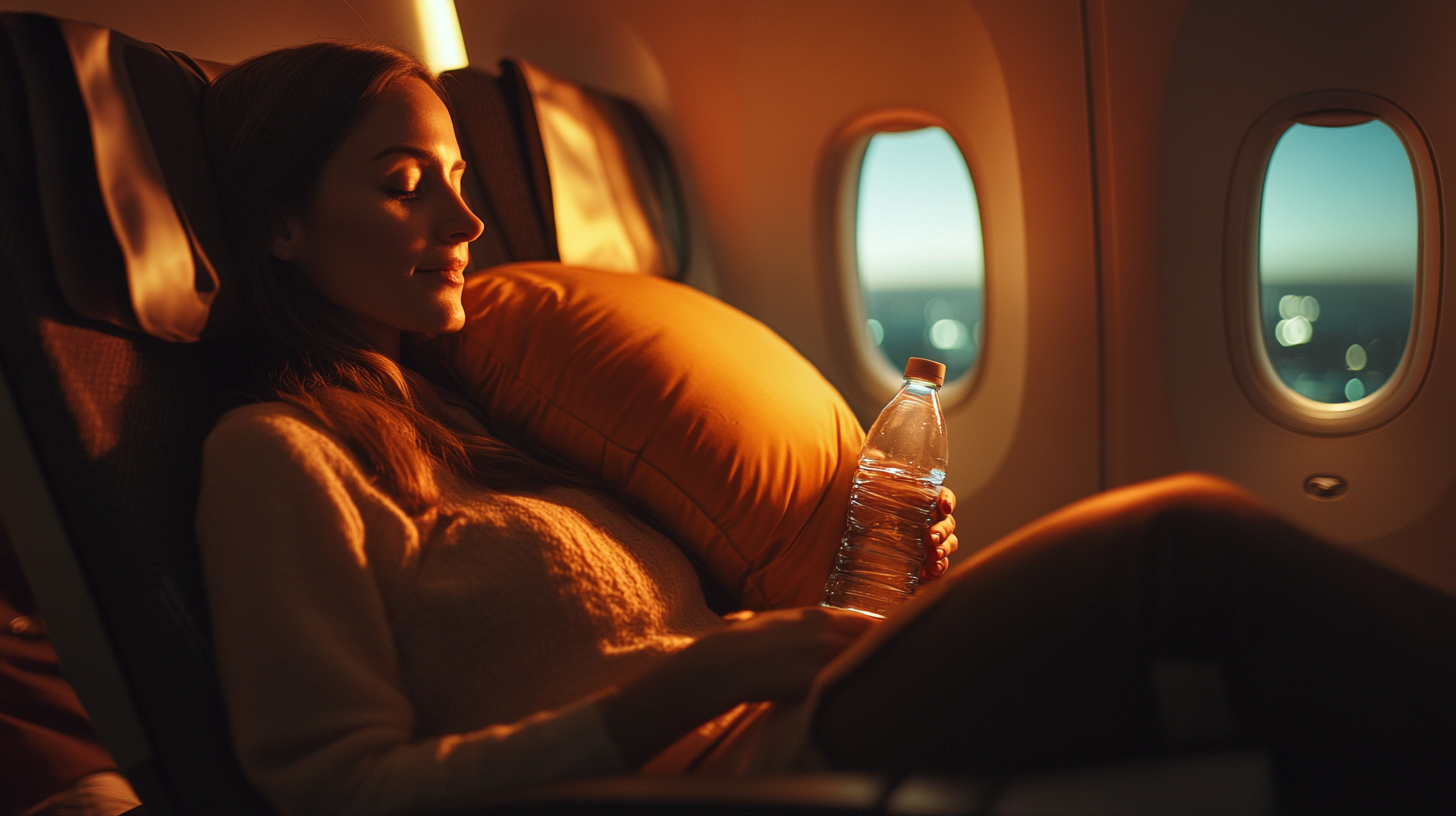
Maintaining proper alignment reduces strain and discomfort during long periods of sitting.
- Footrests and Hammocks: Using a foot hammock can elevate your feet, reducing pressure on your lower back and improving circulation.
- Leg Positioning: Keeping your legs straight or slightly elevated can prevent stiffness and reduce the risk of deep vein thrombosis.
- Seat Adjustments: Utilize your seat’s recline and lumbar support features to find the most comfortable position. Explore ergonomic tips for sitting on long flights for additional guidance.
Temperature Regulation
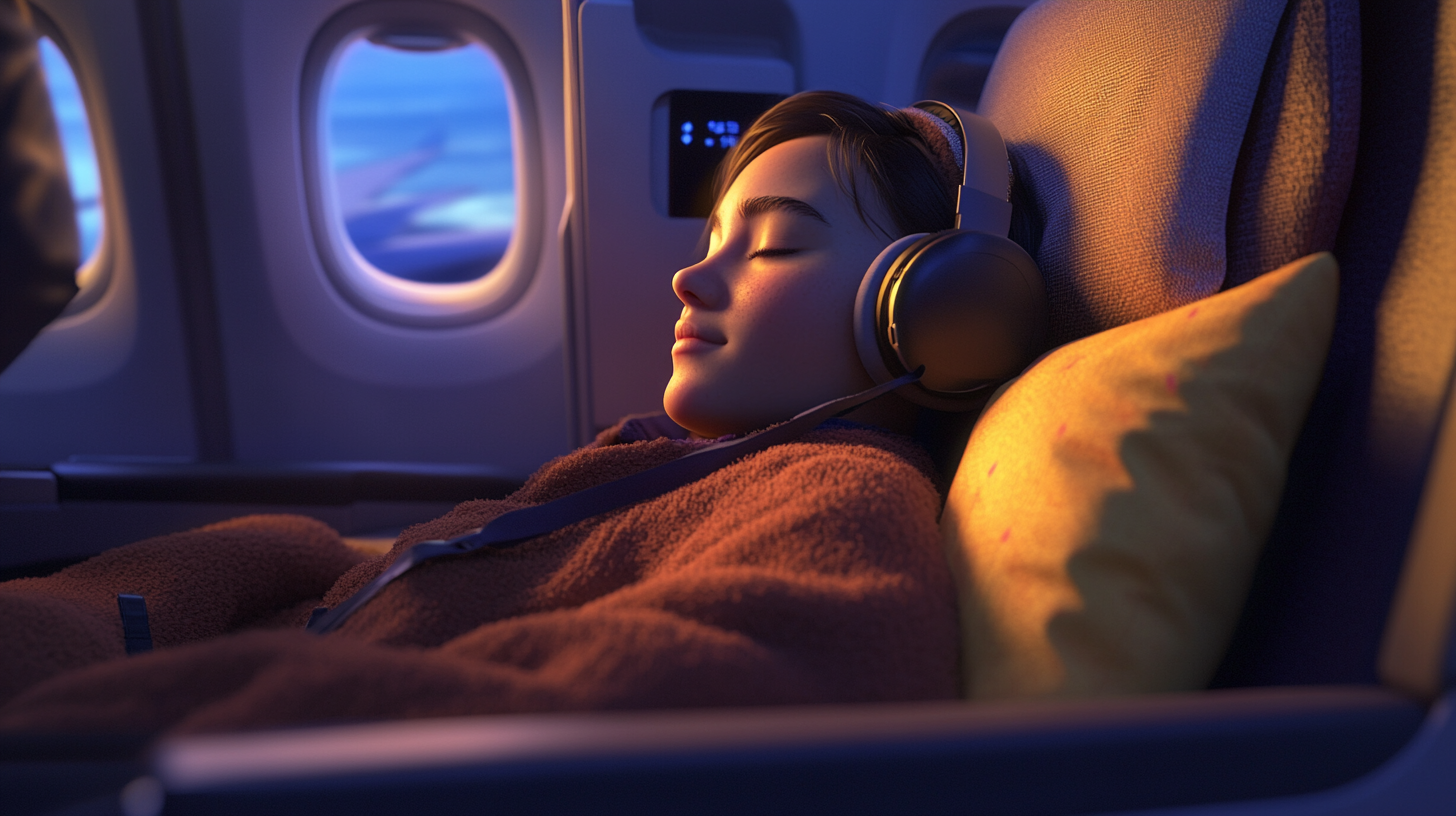
Staying comfortable despite cabin temperature changes helps your body maintain a state conducive to sleep.
- Dress in Layers: Bringing a cardigan, shawl, or light jacket allows you to add or remove layers as needed to stay comfortable.
- Use Blankets Wisely: Airline-provided blankets can be used as additional cushioning or warmth. Alternatively, pack a compact travel blanket like the Mini Wrap Travel Blanket for personal use.
- Warm Accessories: Items like warm socks or a beanie can keep extremities warm, aiding overall comfort.
Signal You’re Resting
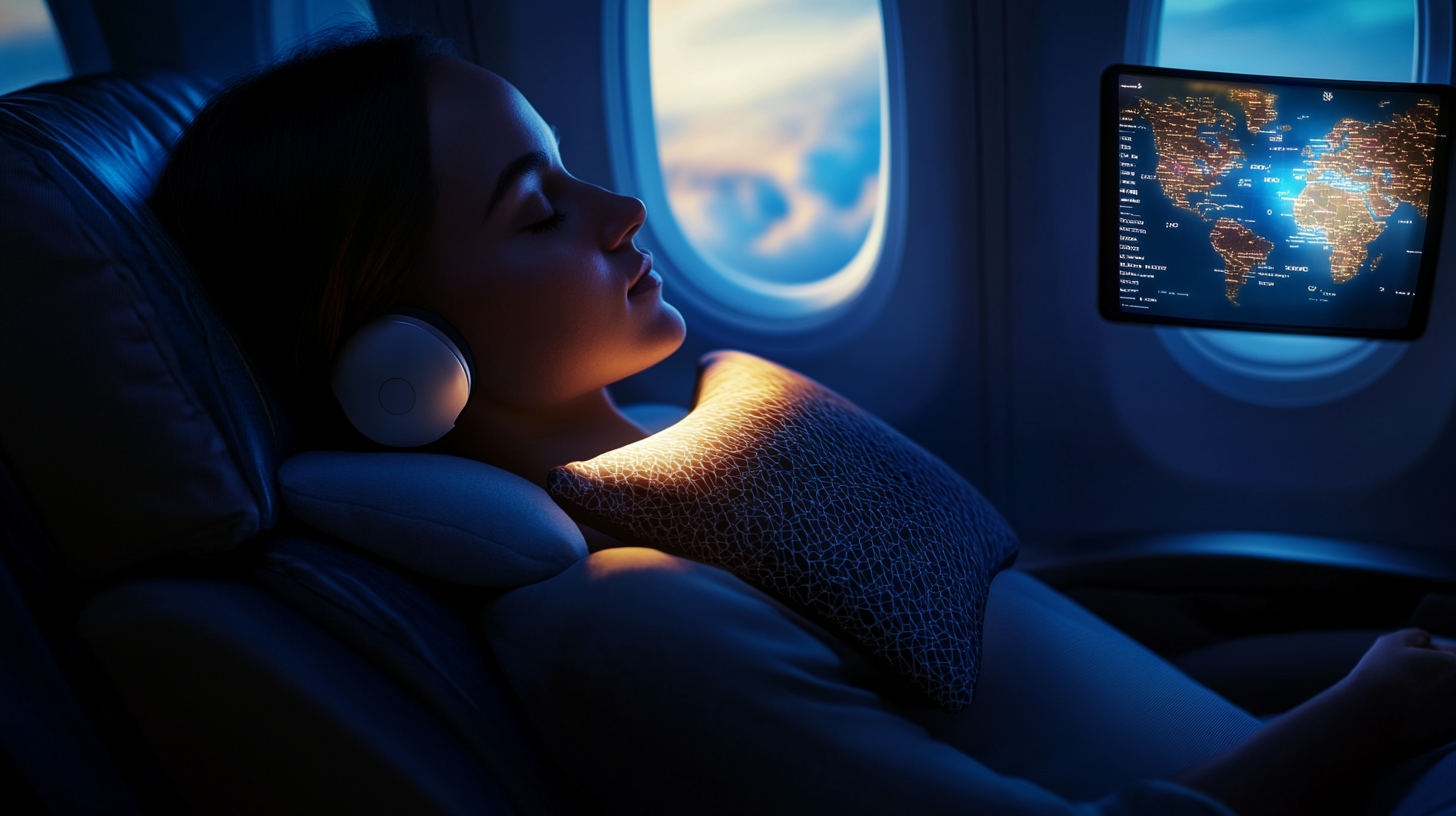
Minimize interruptions from others by visibly indicating your intention to sleep.
- Eye Masks and Headphones: Wearing these items not only helps block out light and sound but also serves as a universal sign that you’re not to be disturbed.
- Body Language: Turning slightly away from the aisle or covering yourself with a blanket can deter unnecessary interactions.
- Set Expectations: If traveling with companions, communicate your plan to rest so they can support your need for uninterrupted sleep.
Health and Safety Considerations
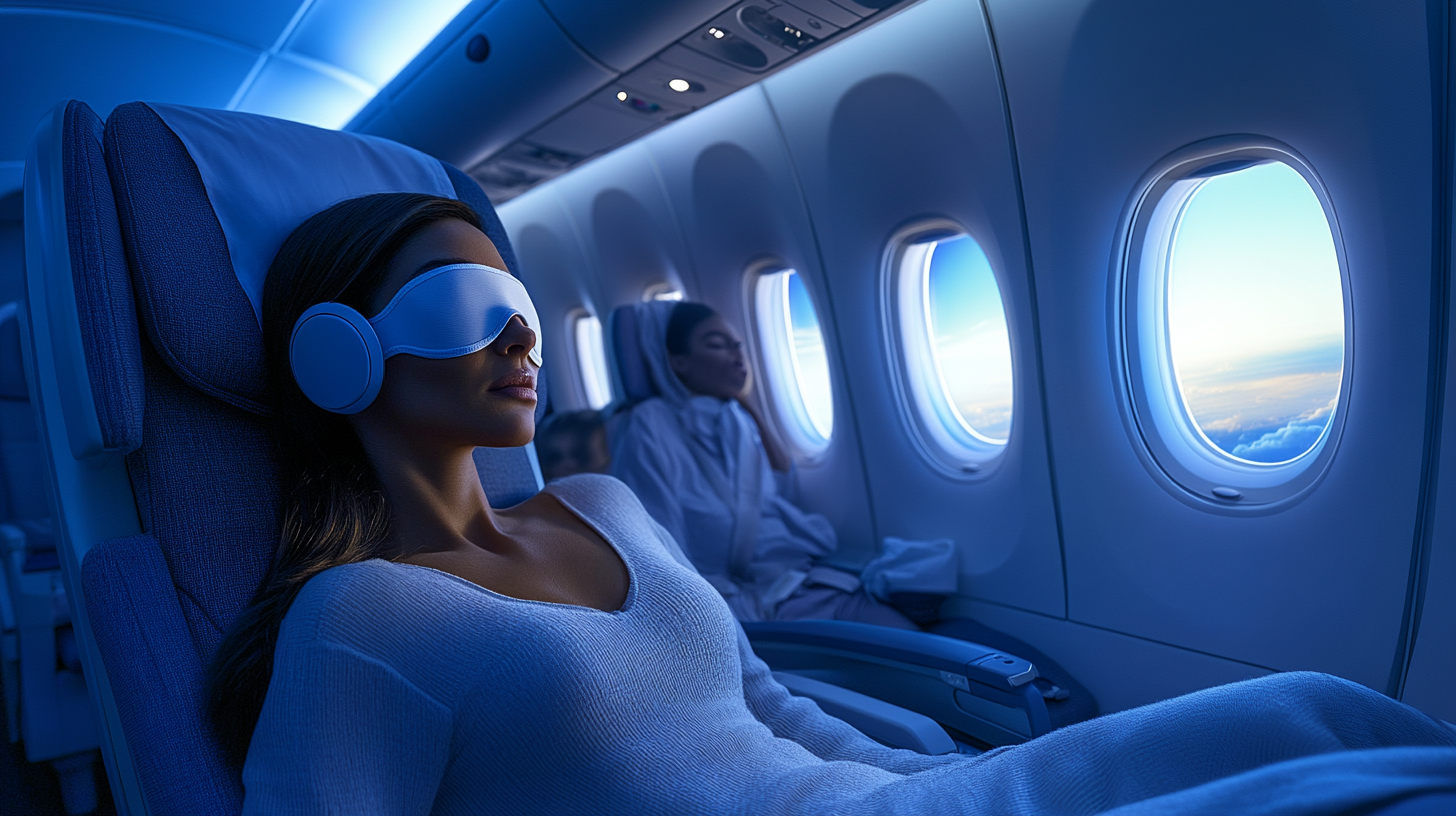
Ensuring your well-being throughout the flight is essential for a safe and comfortable journey.
Stay Hydrated
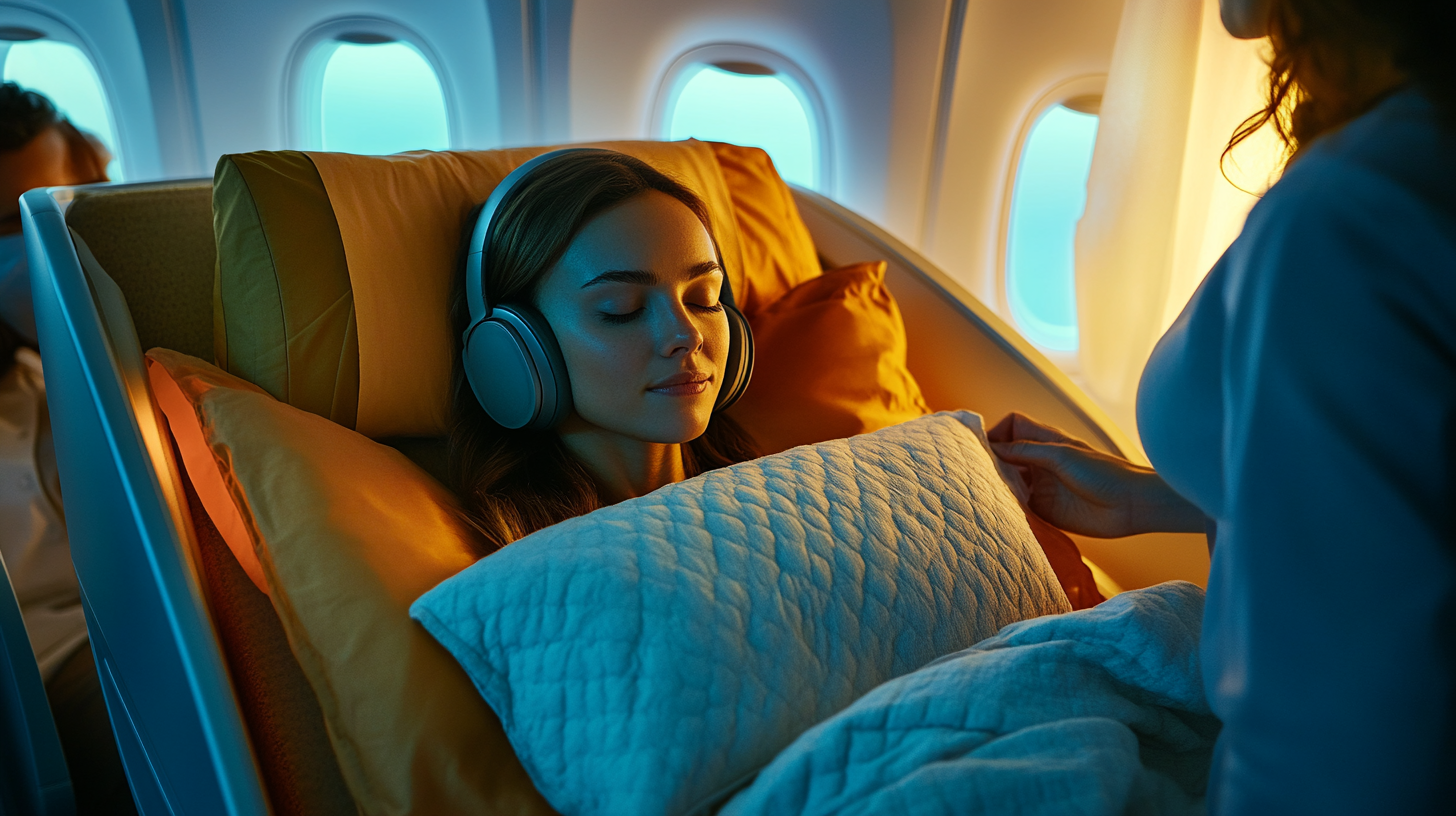
Adequate hydration is vital for maintaining health and comfort during flights.
- Regular Water Intake: Aim to drink water consistently throughout the flight. Cabin air is dry, and hydration helps prevent fatigue and discomfort.
- Avoid Diuretics: Minimize consumption of caffeine and alcohol, which can increase dehydration.
- Monitor Hydration: Signs of dehydration include dry mouth, fatigue, and headaches. Using a hydration app or setting reminders can be helpful.
Secure Your Seatbelt Over Blankets
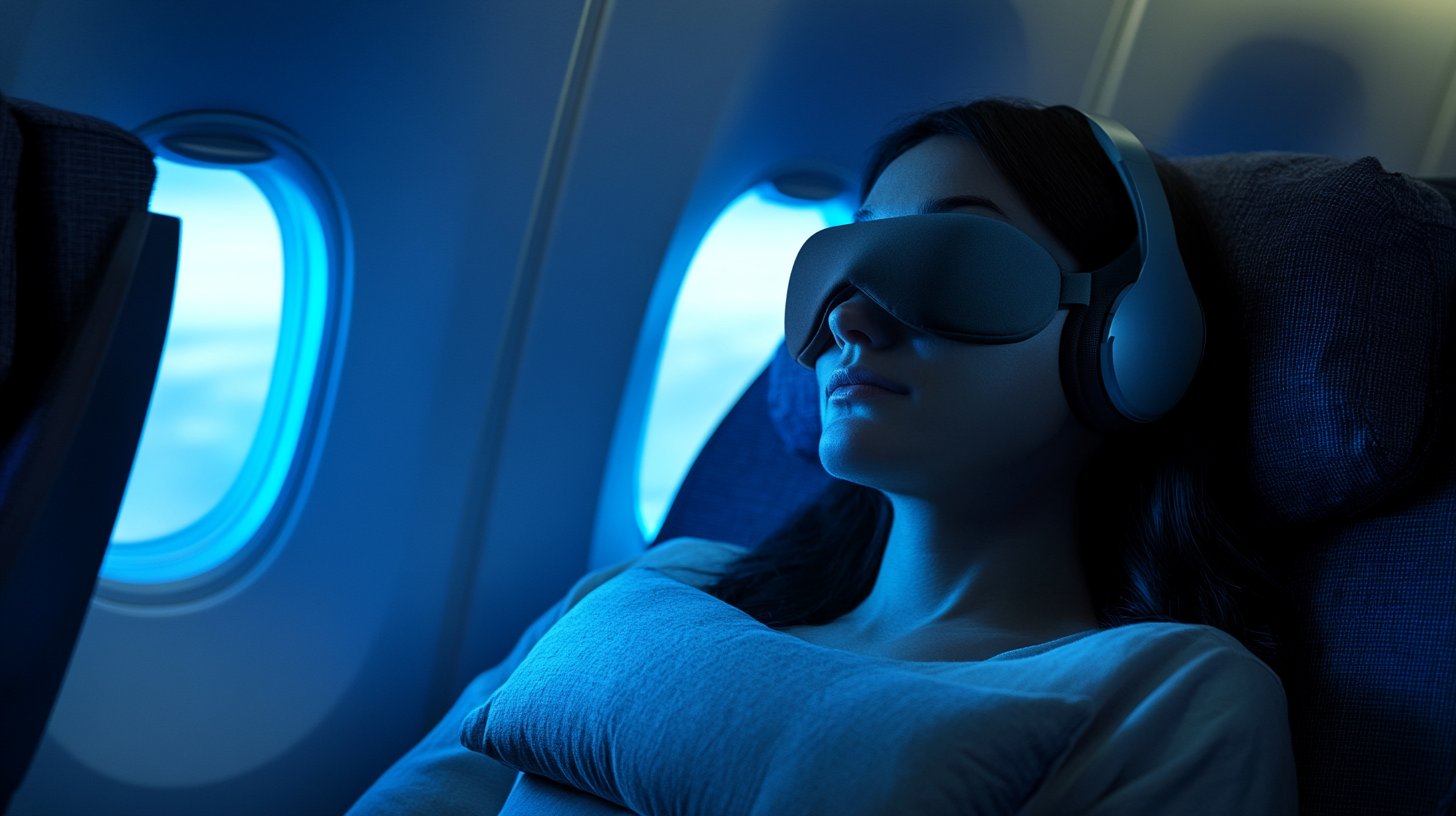
For safety during turbulence, keep your seatbelt fastened and visible to crew members.
- Prevent Disturbances: Visible seatbelts allow flight attendants to verify compliance without waking you during checks.
- Ensure Safety: Unexpected turbulence can occur at any time. Keeping your seatbelt fastened reduces the risk of injury.
- Comfort Considerations: Adjust the seatbelt to be snug yet comfortable over your blanket or clothing layers.
Keep Movement in Mind
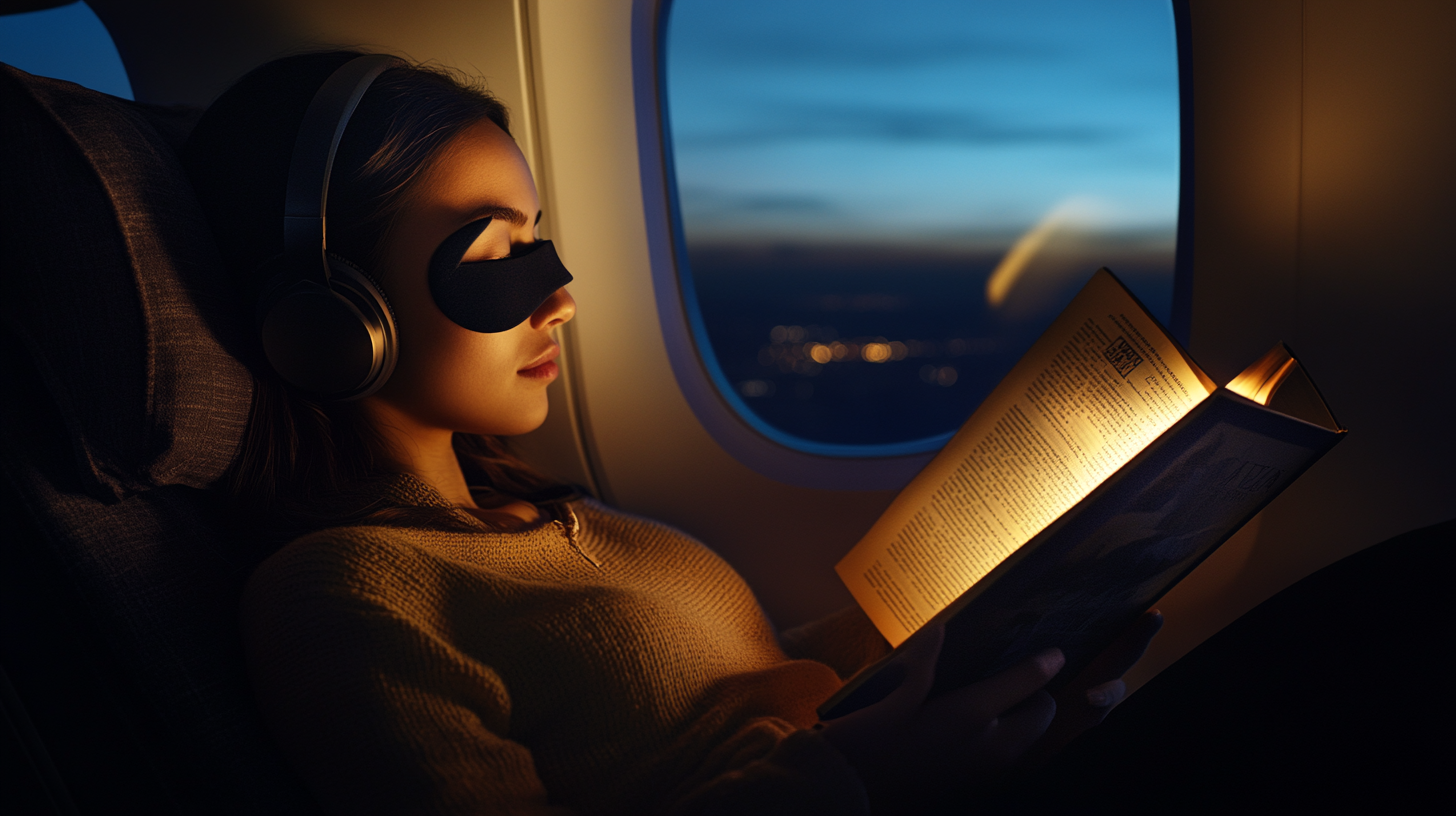
Reducing the risk of deep vein thrombosis (DVT) is important during long periods of immobility.
- In-Seat Exercises: Simple movements like ankle circles, foot pumps, and leg lifts can promote circulation.
- Periodic Walks: If feasible, take short walks up and down the aisle to stretch your legs and change position.
- Compression Wear: Wearing compression socks or stockings can help prevent swelling and improve blood flow. For options, refer to recommended compression wear for travelers .
Adjusting to Time Zones
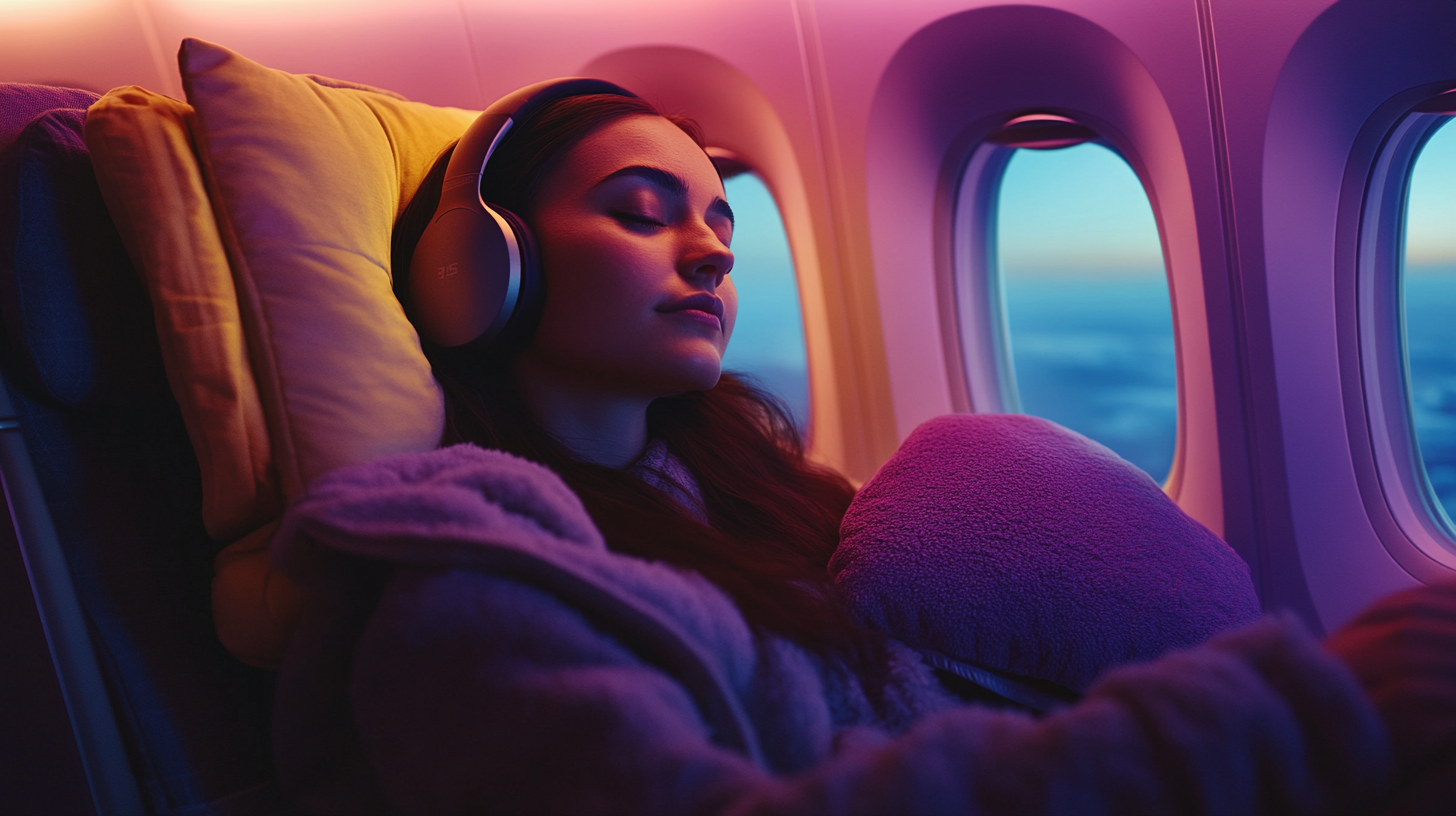
Managing jet lag by syncing your body clock with your destination can make a significant difference in how you feel upon arrival.
Begin Time Zone Adjustment
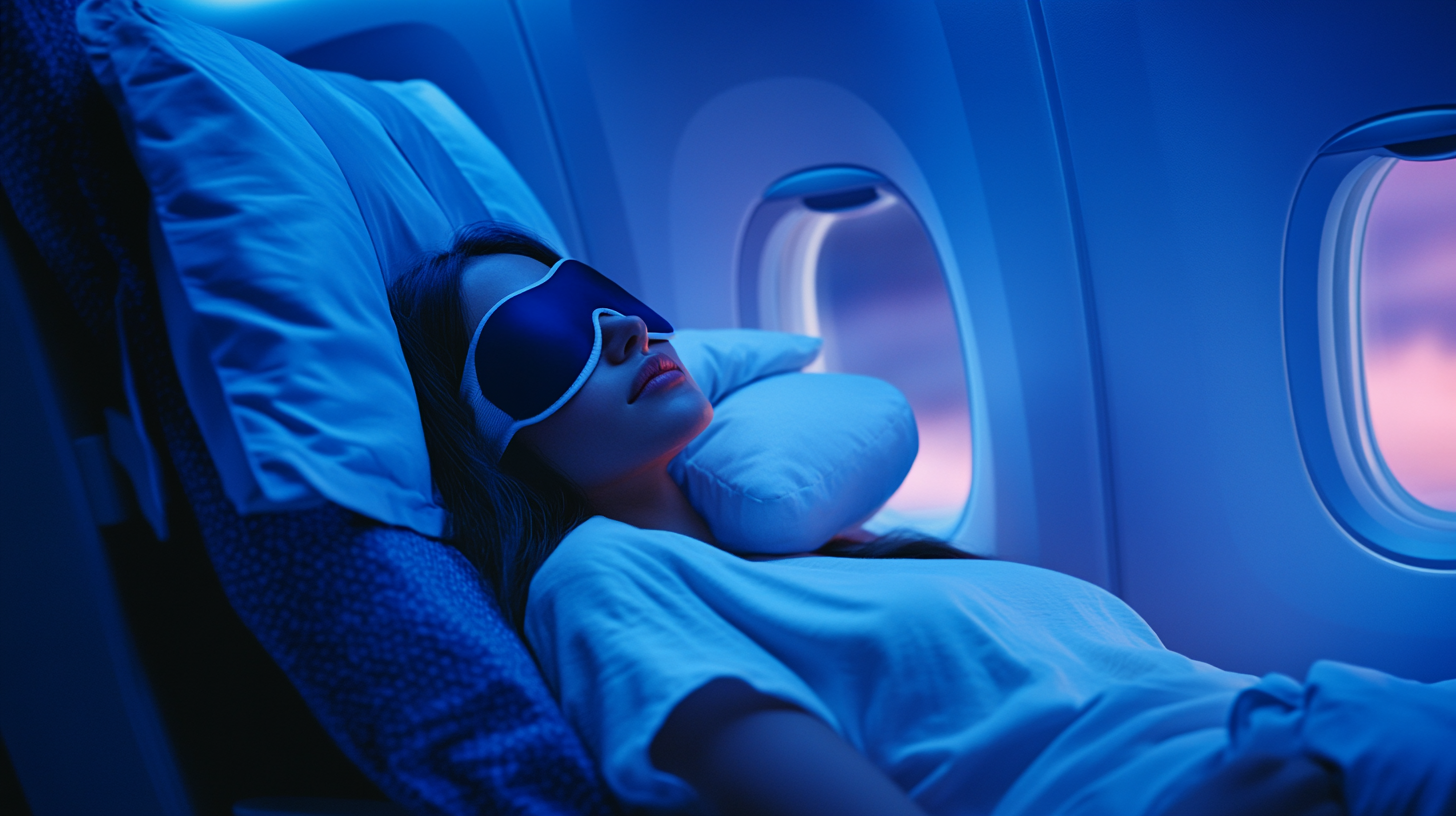
Proactively altering your schedule can ease the transition to a new time zone.
- Sleep and Meal Times: Adjust your sleep and meal times incrementally before departure to align more closely with your destination.
- Set Your Watch: Once on the plane, set your watch or device to the new time zone to begin mentally adjusting.
- For detailed strategies, consult effective methods for combating jet lag .
Light Exposure
Regulating exposure to light is a powerful tool in adjusting your circadian rhythm.
- Use Eye Masks: Blocking out light during your destination’s nighttime helps signal to your body that it’s time to sleep.
- Seek Natural Light: Upon arrival, spending time outdoors in natural sunlight can help reset your internal clock.
- Manage Artificial Light: Limit exposure to bright screens and artificial lighting when it’s nighttime at your destination.
Additional Tips and Hacks
Explore creative strategies to enhance sleep and make your journey more comfortable.
The Military Sleep Hack
A method developed by the U.S. military to help soldiers fall asleep quickly in challenging environments.
- Step-by-Step Technique: Relax your facial muscles, drop your shoulders, and release tension in your body. Breathe deeply and clear your mind by visualizing a peaceful scene.
- Practice Makes Perfect: Consistent practice can improve the effectiveness of this technique over time.
- Adaptable Method: This approach can be used in various settings beyond flights, as described in military techniques for better sleep .
Distract Your Mind
Engaging your mind in calming activities can facilitate the onset of sleep.
- Audio Content: Listening to soothing music, ambient sounds, or sleep stories can help distract from the environment and promote relaxation.
- Guided Meditation: Apps and recordings that offer guided meditations or breathing exercises can aid in calming the mind.
- Reading Material: Choose light, non-stimulating reading material to help tire your eyes and mind.
Personalize Your Comfort
Finding the combination of strategies that work best for you may require some experimentation.
- Familiar Items: Bringing a favorite scarf, pillowcase, or small personal item can add a sense of familiarity and comfort.
- Adjust Supports: Tailor the use of pillows and cushions to your preferred sleeping position, whether that’s leaning forward, to the side, or reclining.
- Stay Open-Minded: Be willing to try different techniques and products to discover what enhances your sleep the most. For inspiration, see traveler-tested sleep hacks .
Final Thoughts
Achieving restful sleep on a plane is a blend of preparation, the right tools, and personal strategies. By carefully selecting your seat, packing essential comfort items, and employing relaxation techniques, you can transform your in-flight experience from a challenge into an opportunity for rejuvenation. Remember that personal adaptation is key—what works for one traveler might not work for another. Patience and practice in implementing these strategies will enhance your ability to rest like a pro on your next long-haul flight.
Follow us back to Seat 5A for more travel tips and insights. Sleep well and bon voyage!



